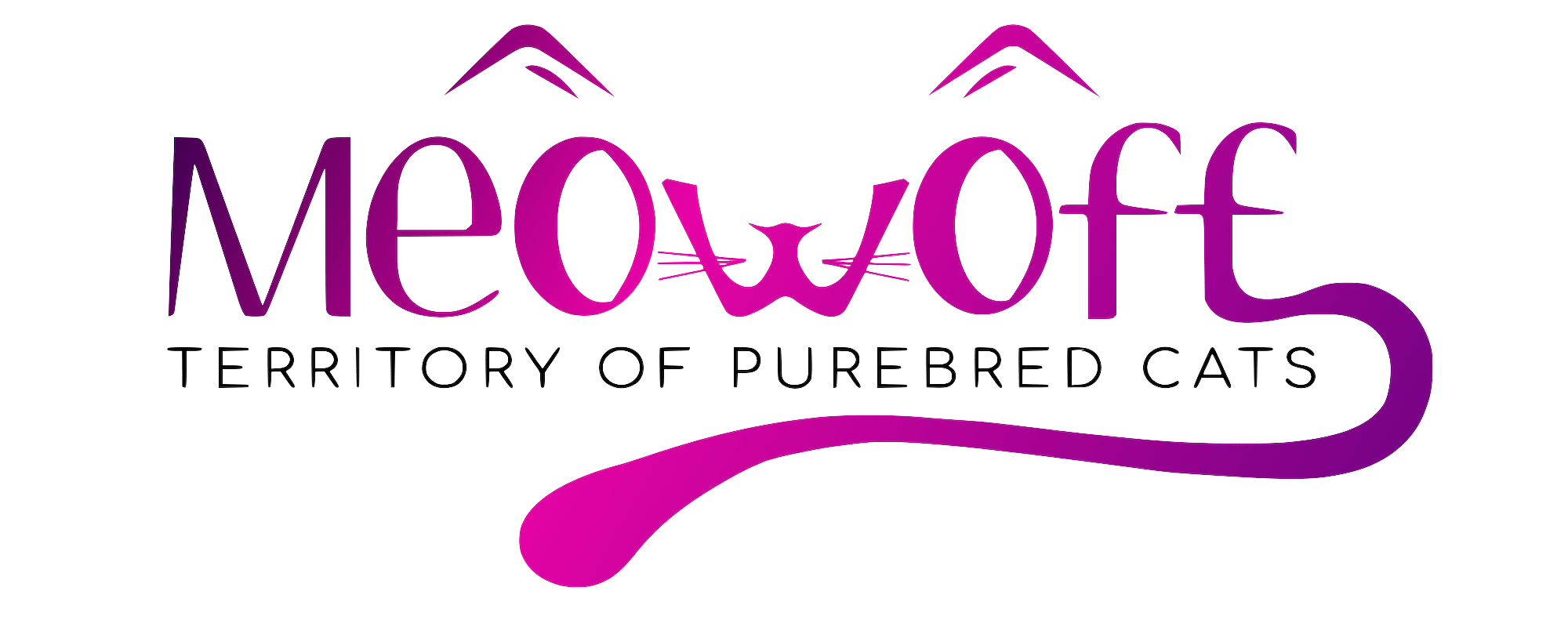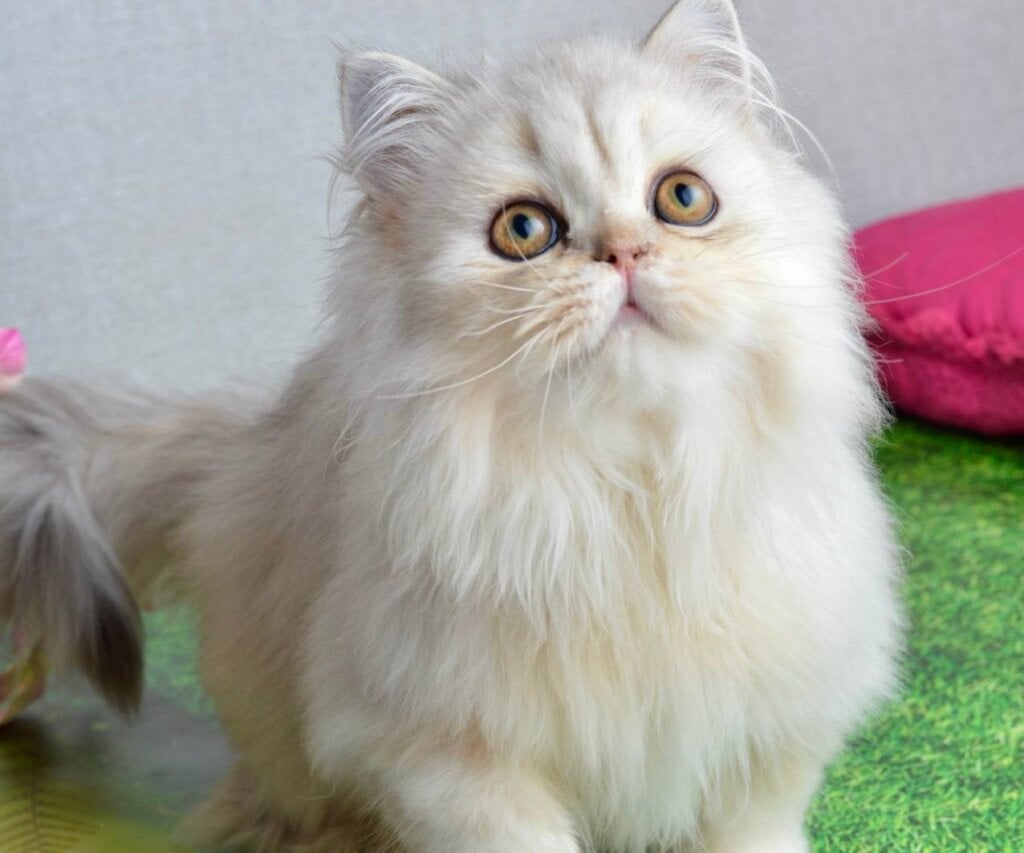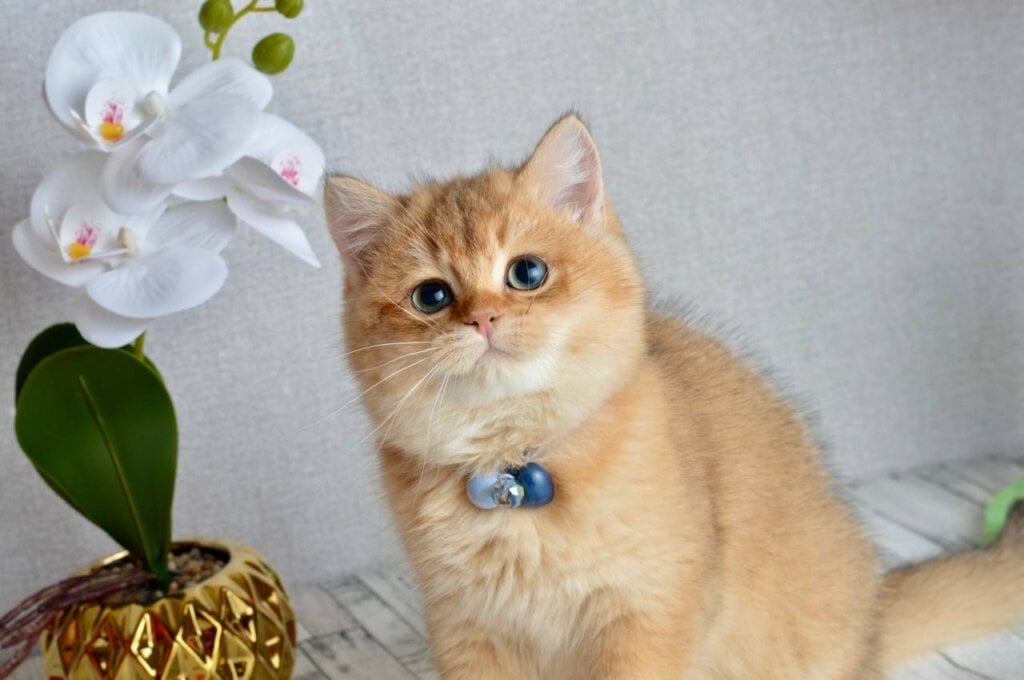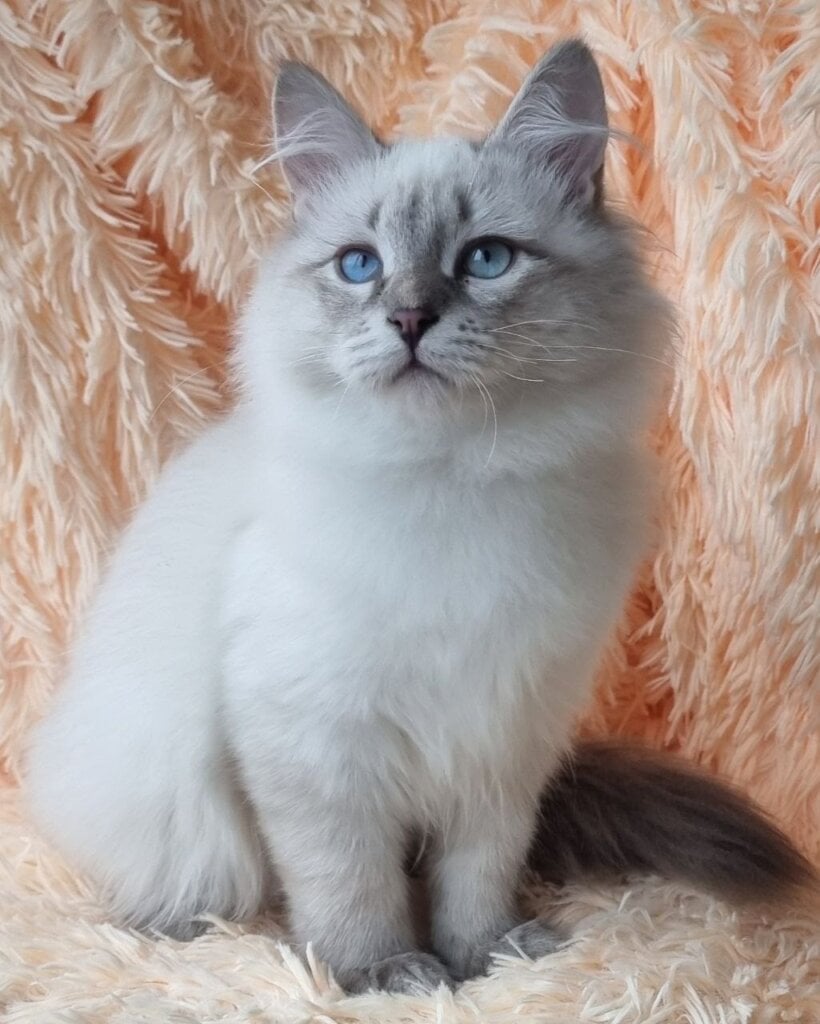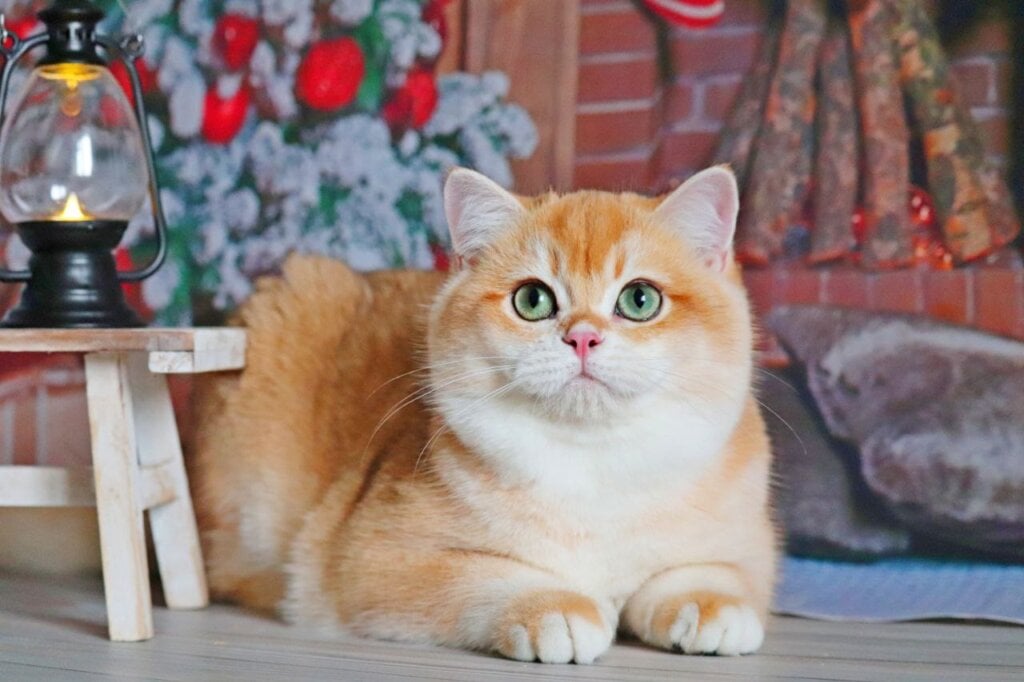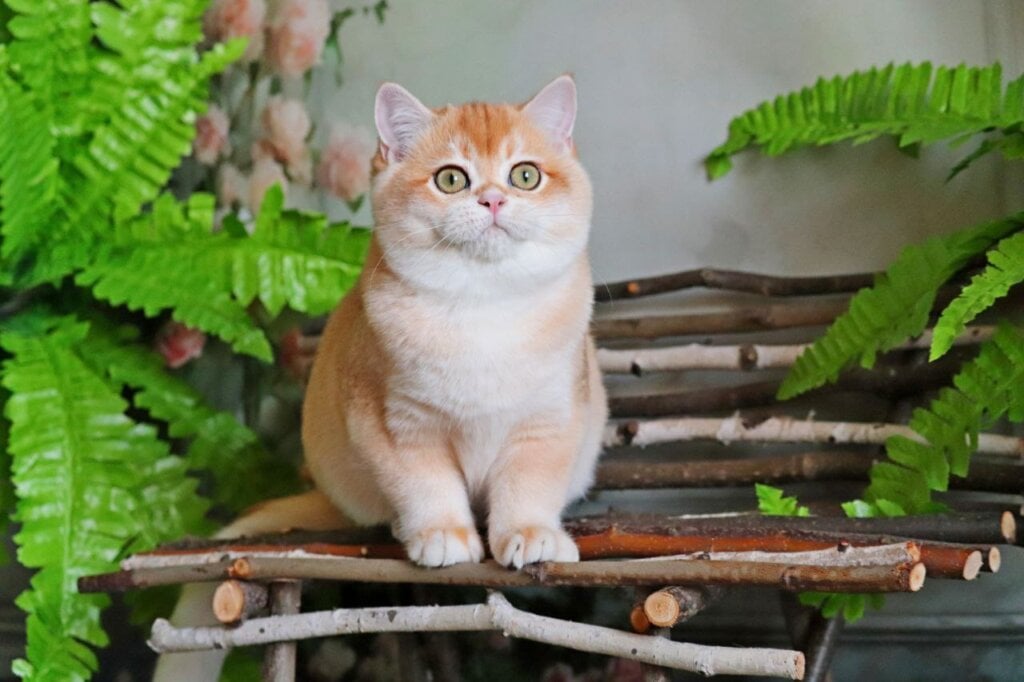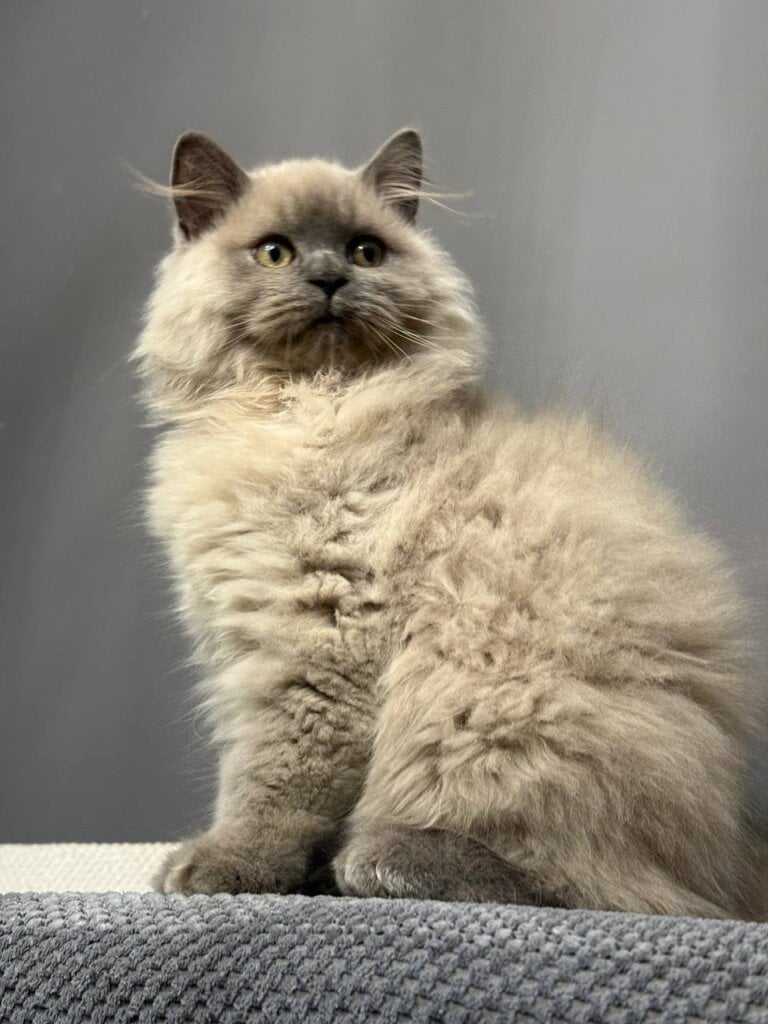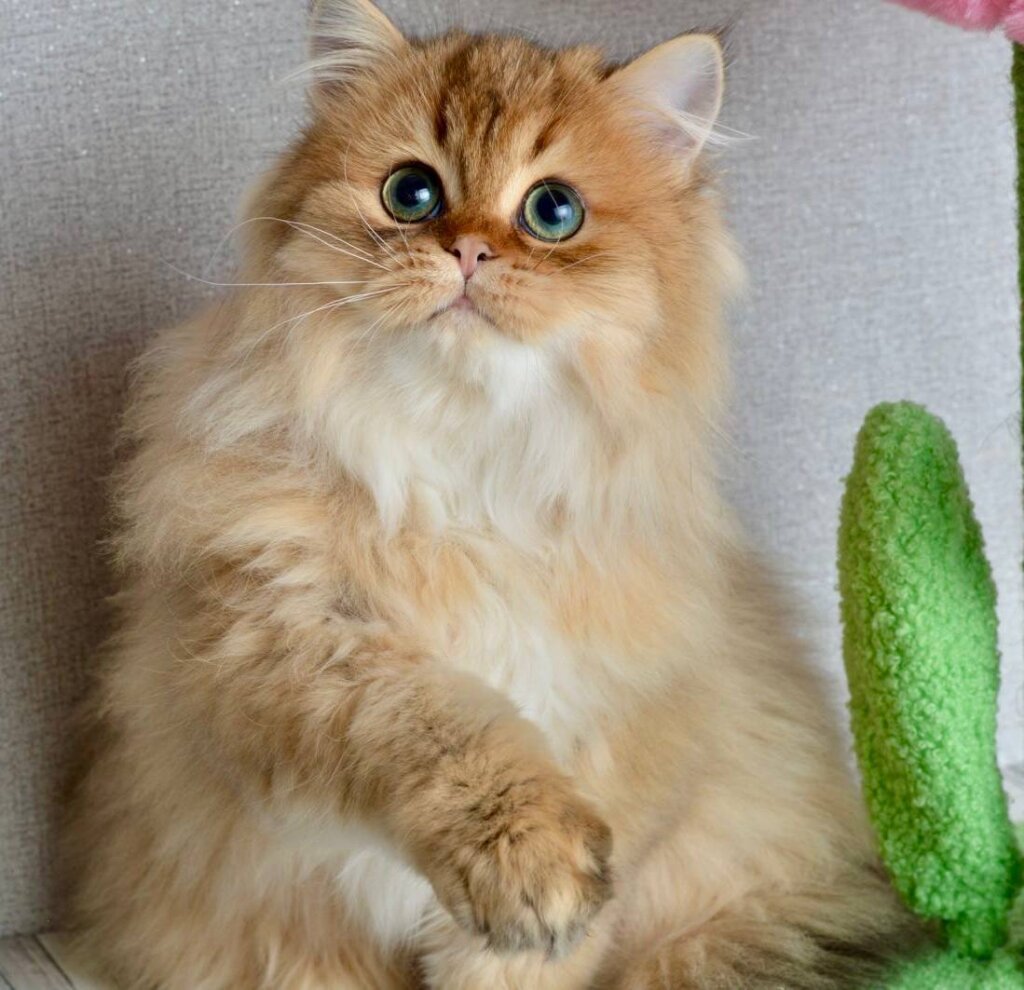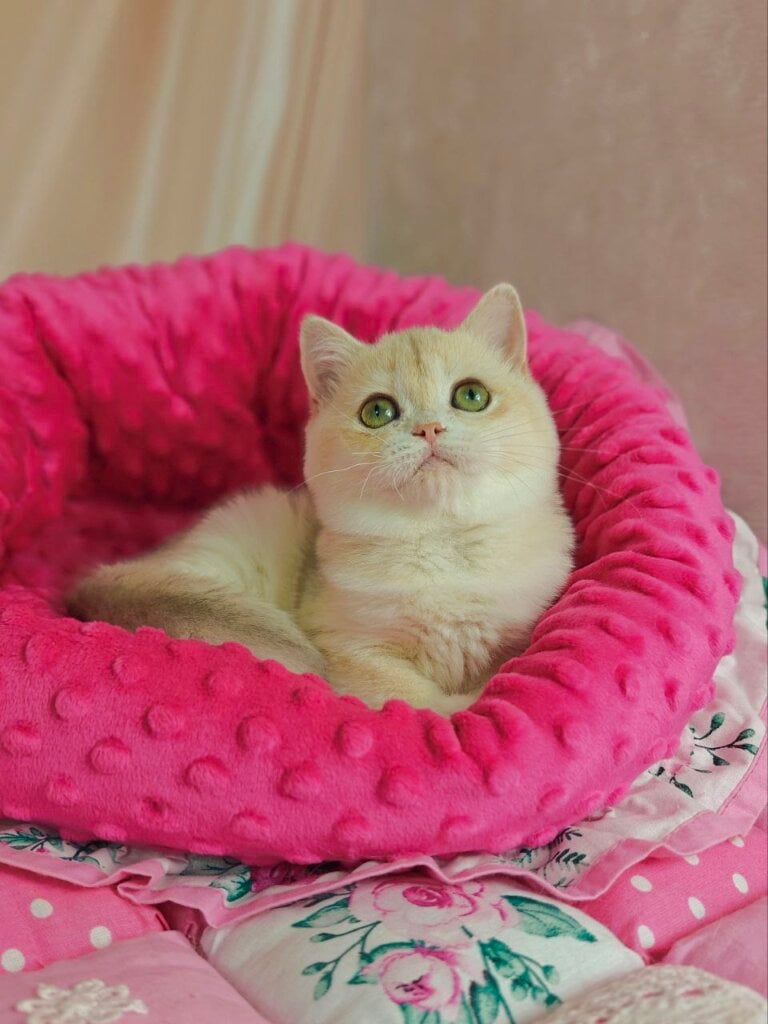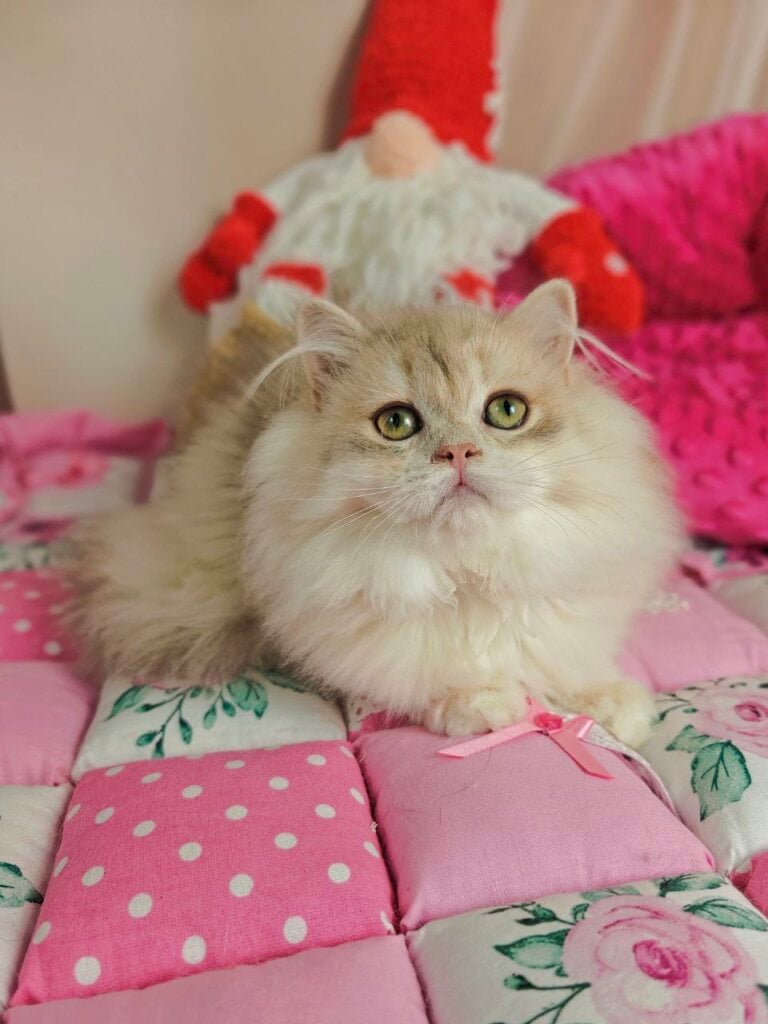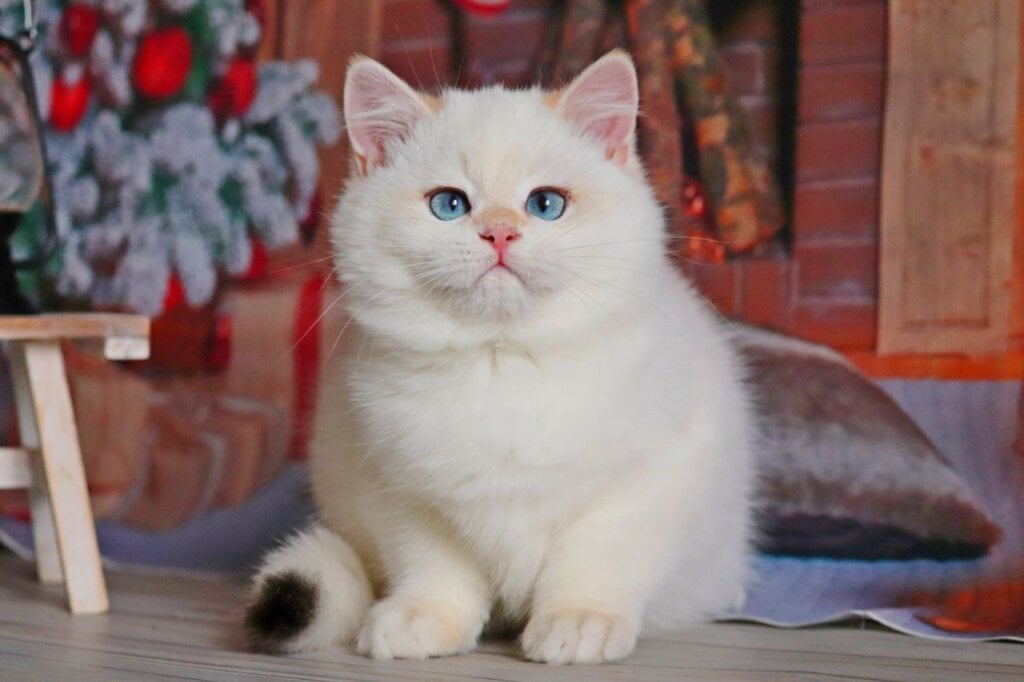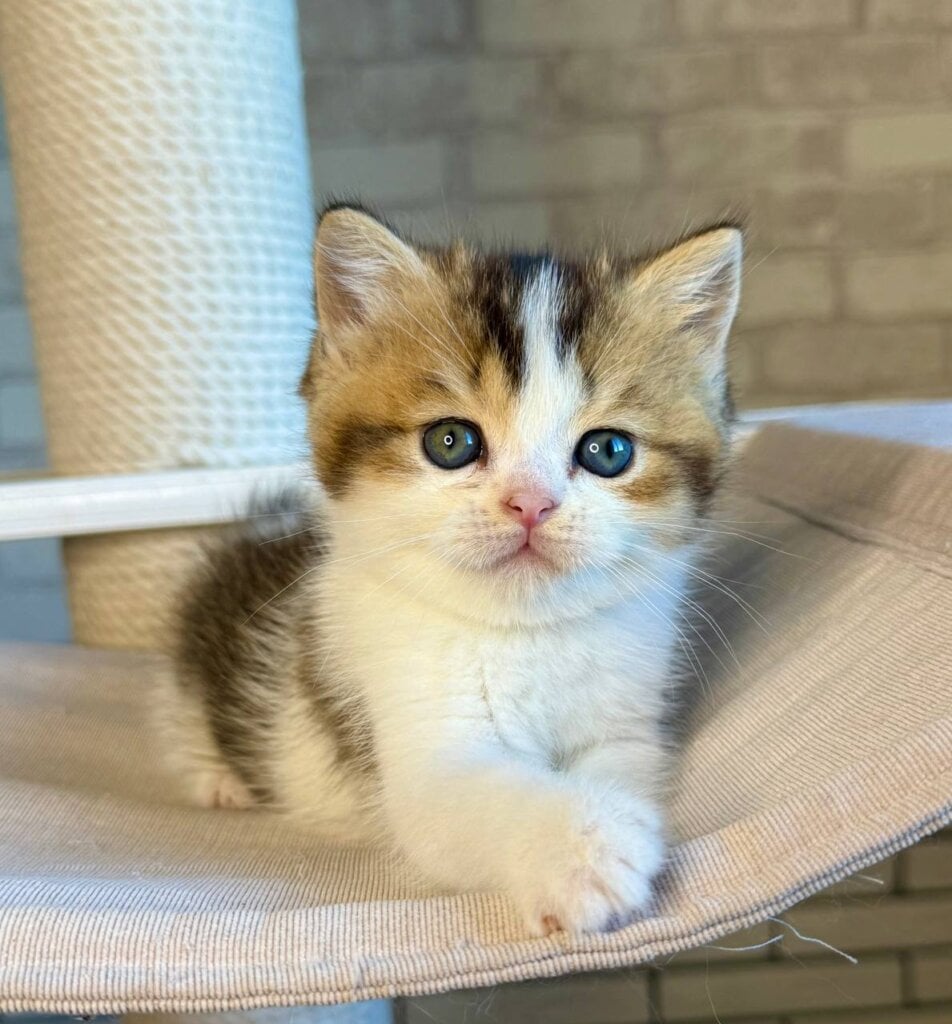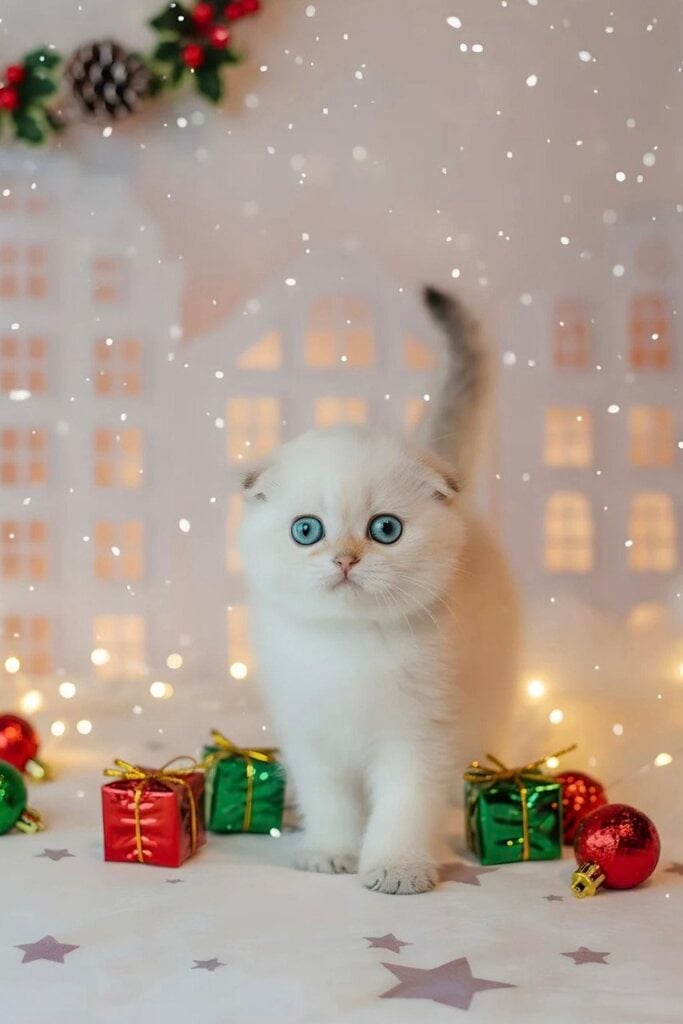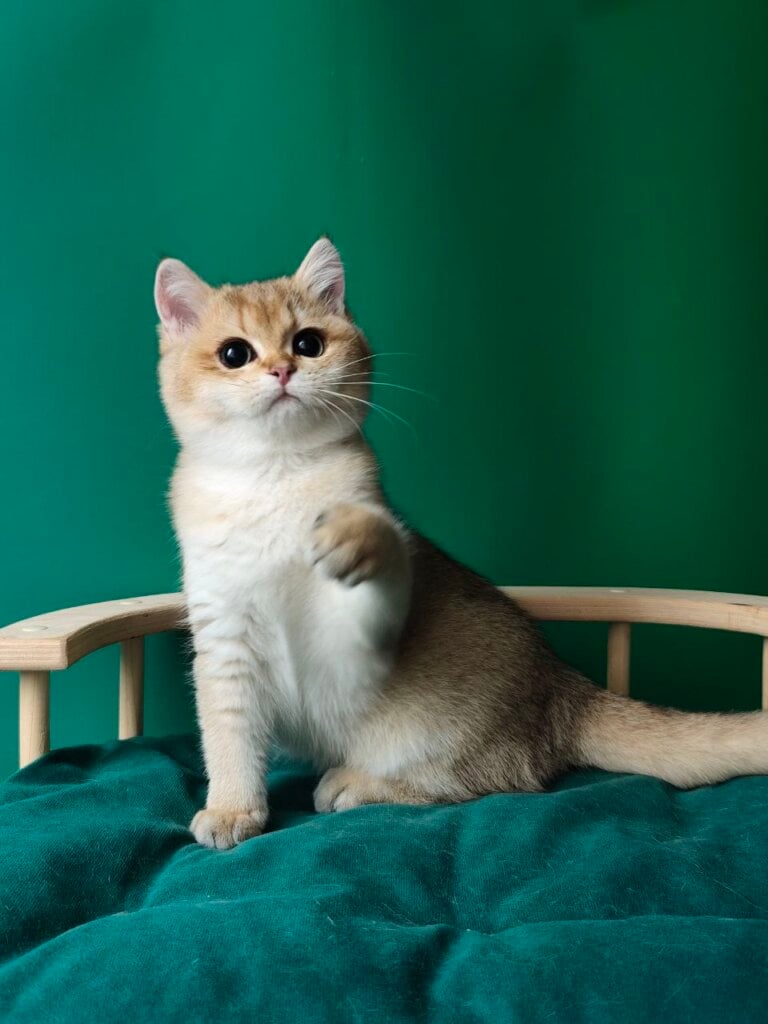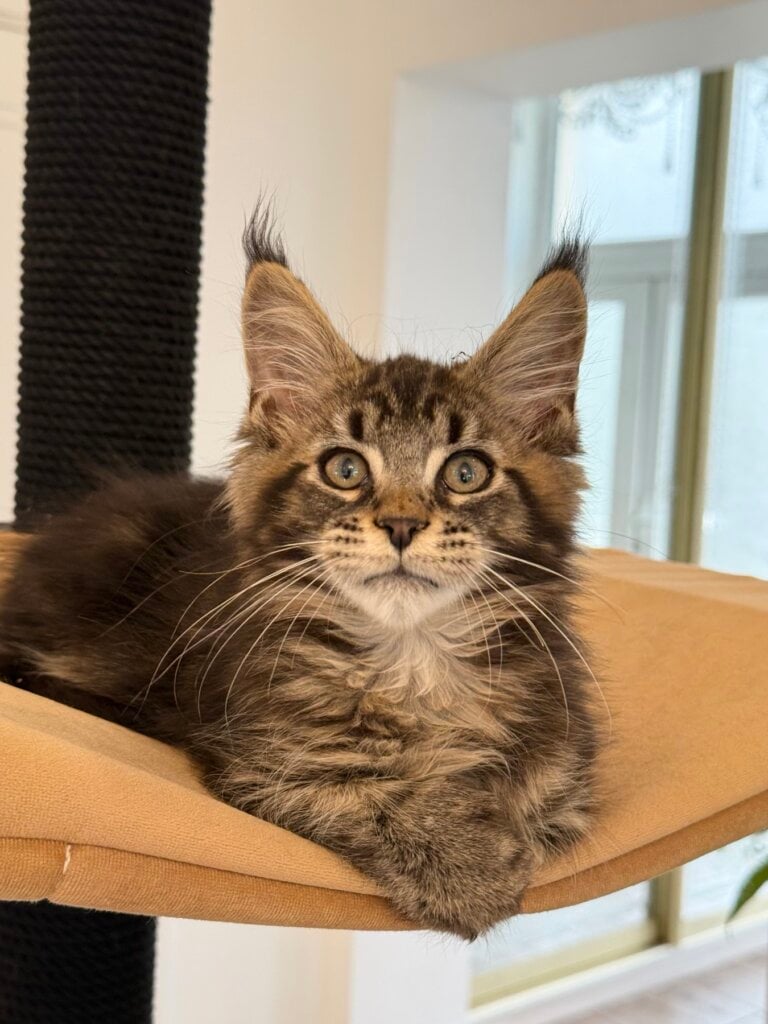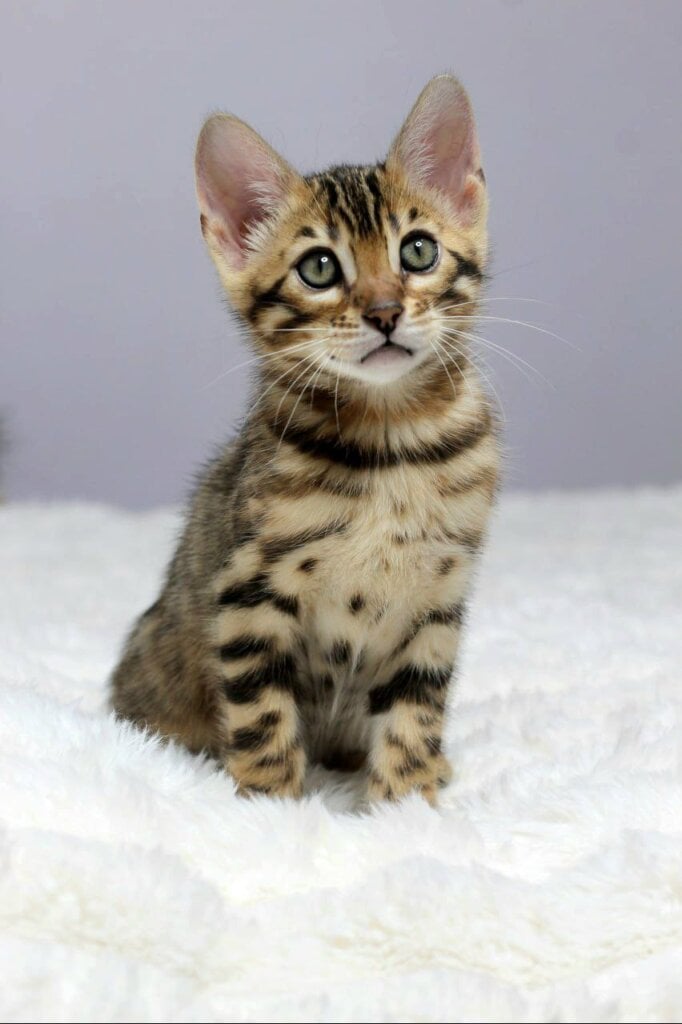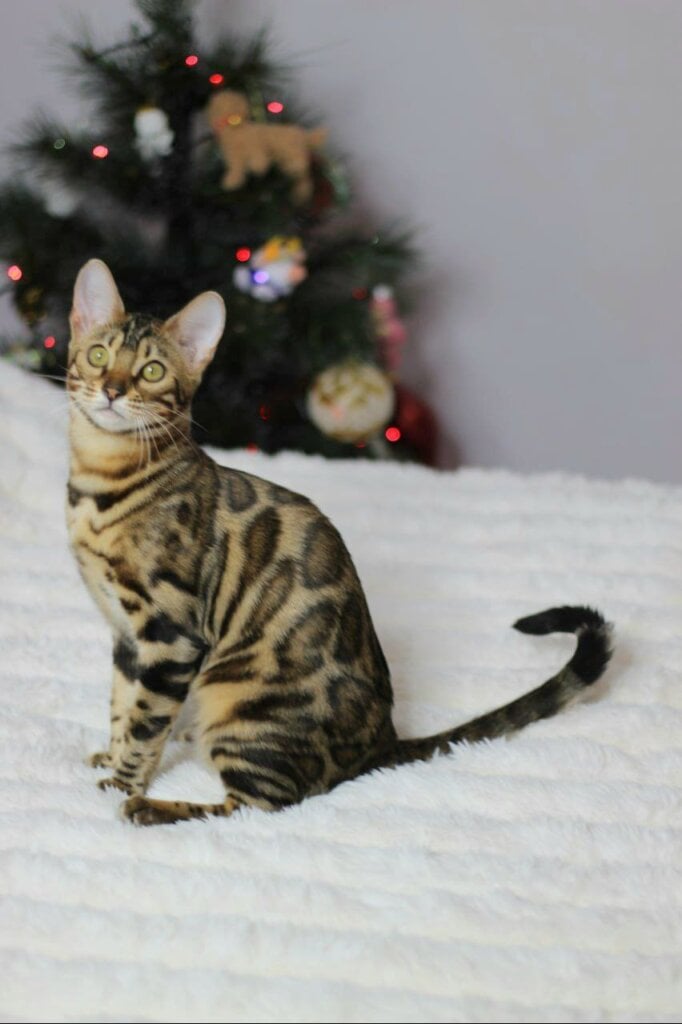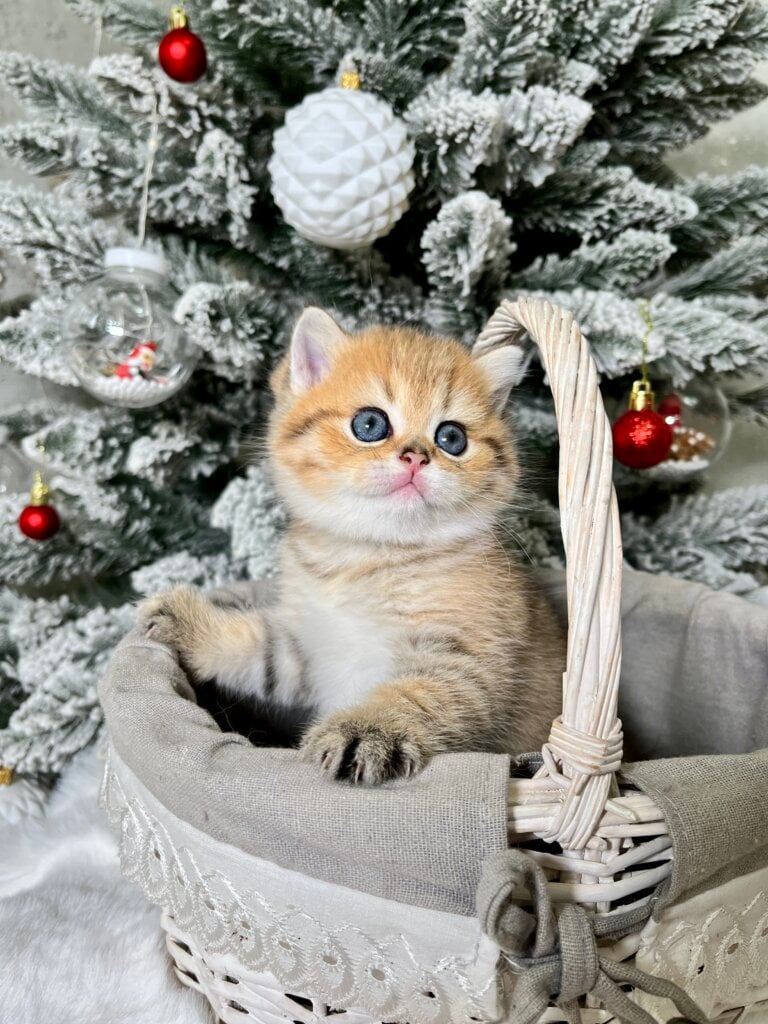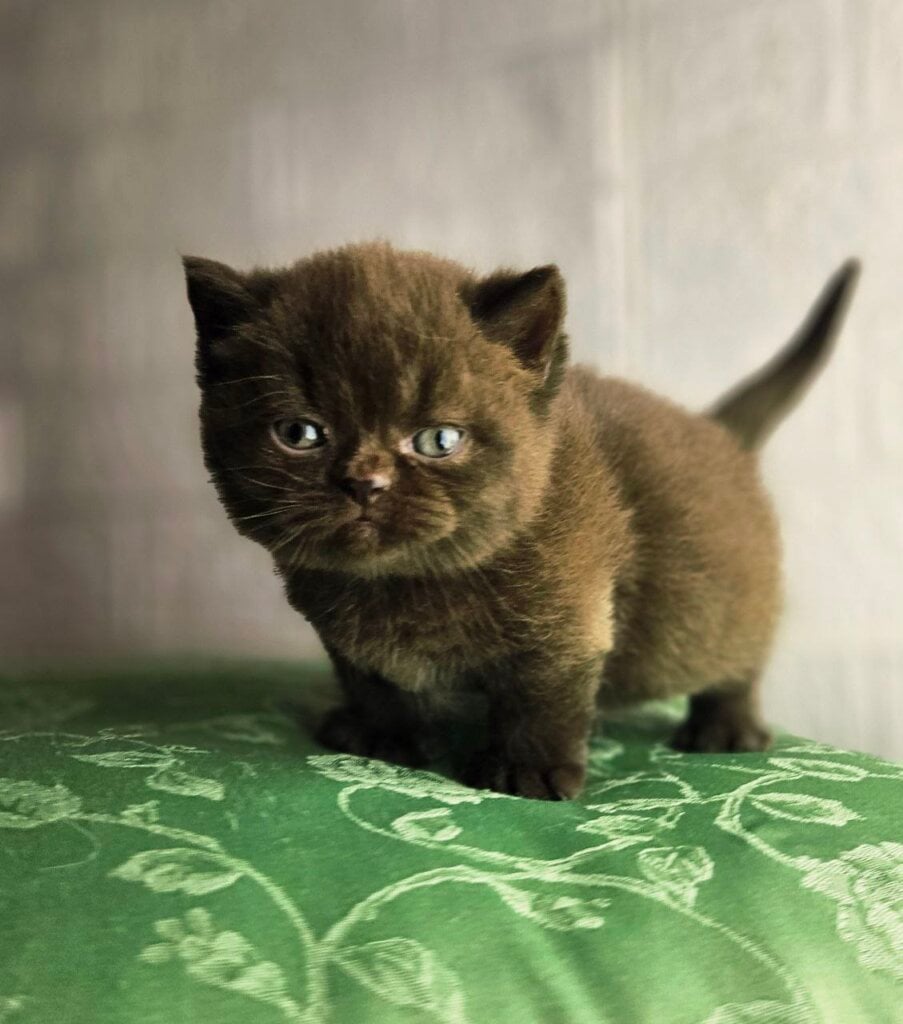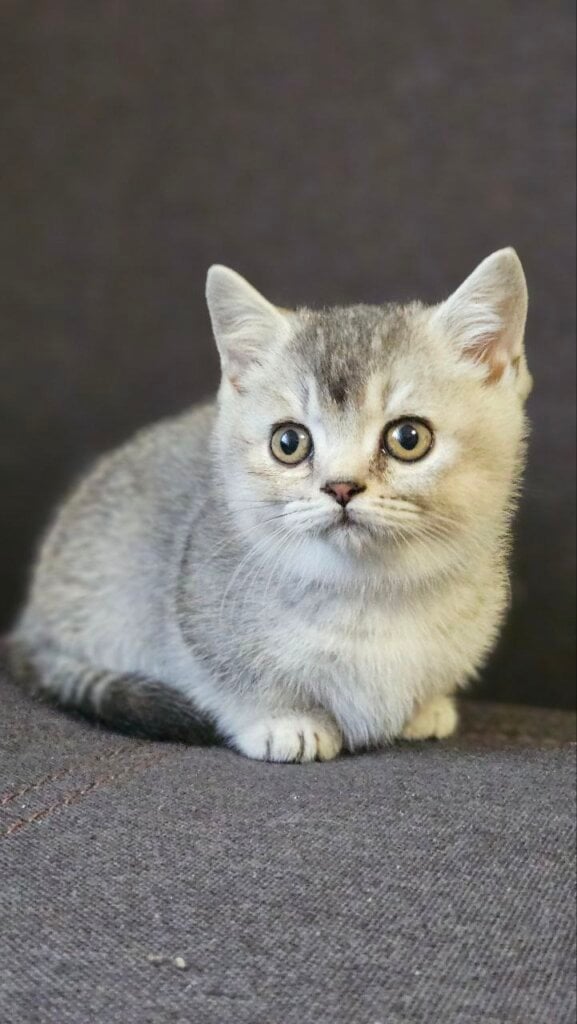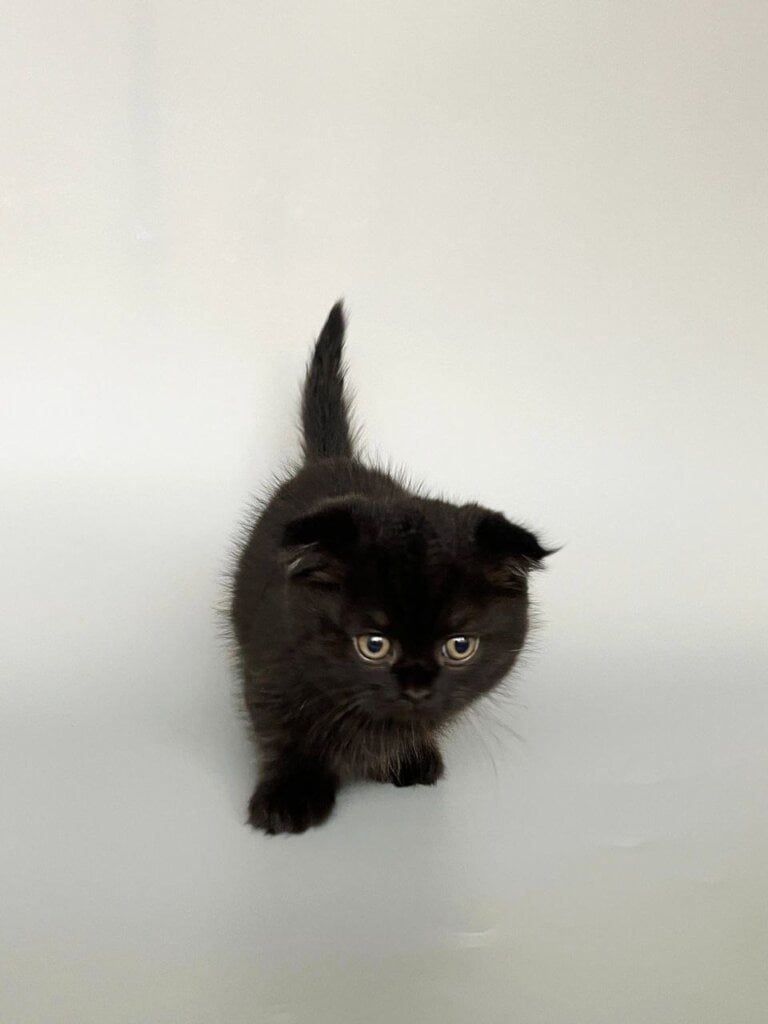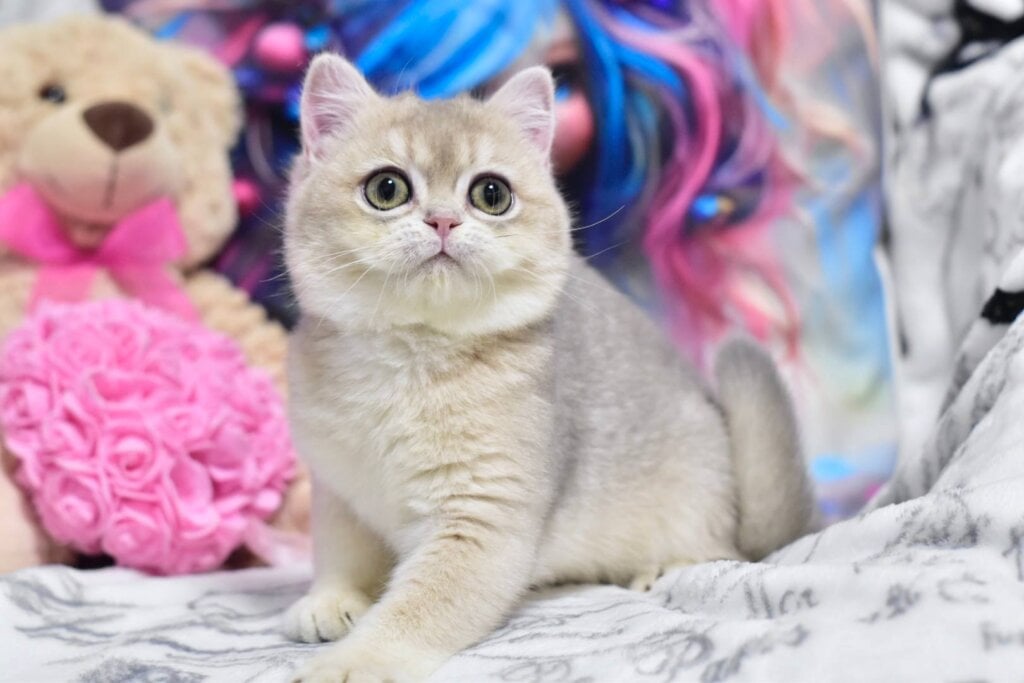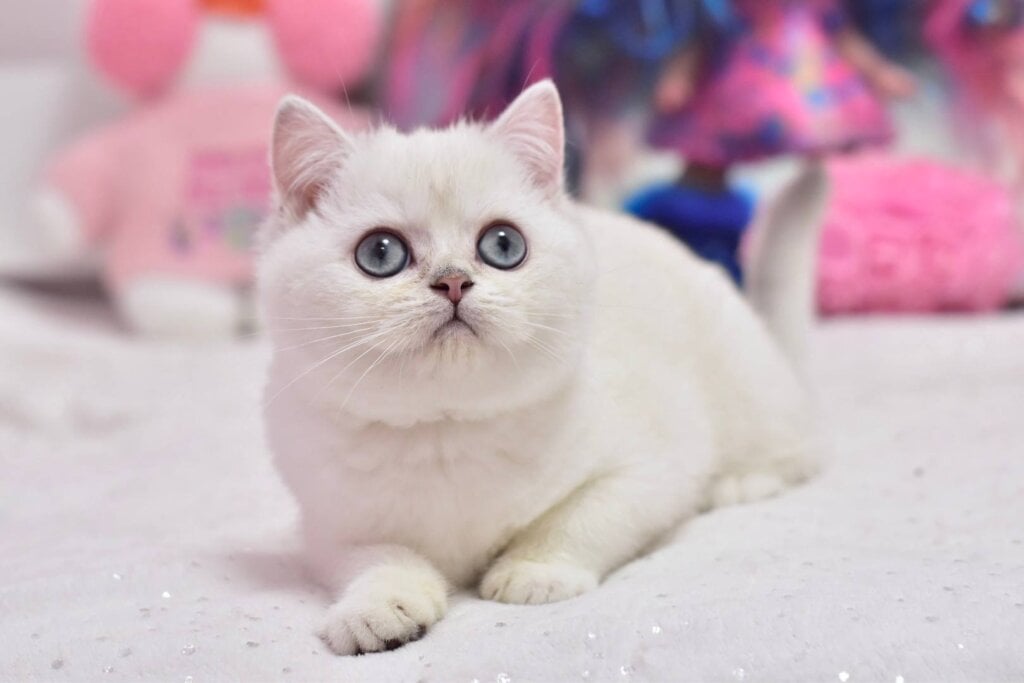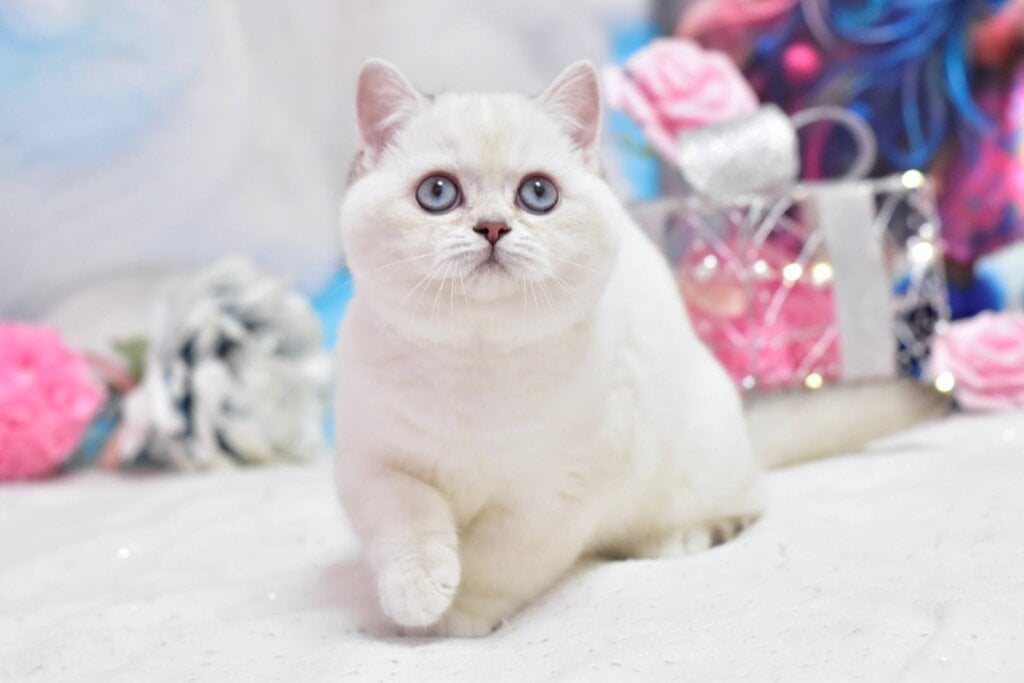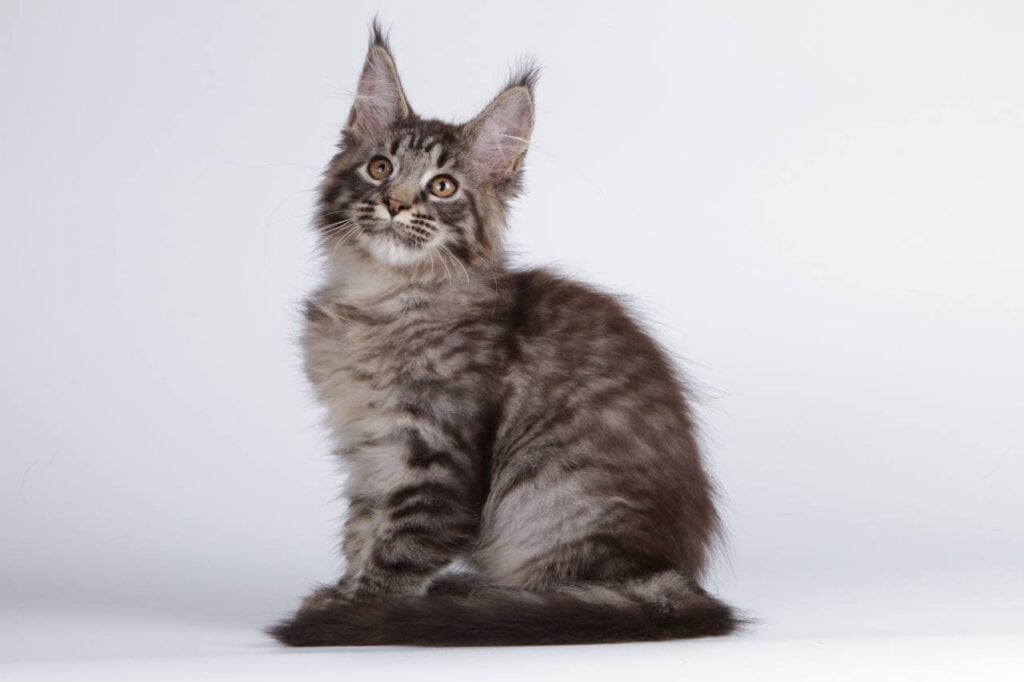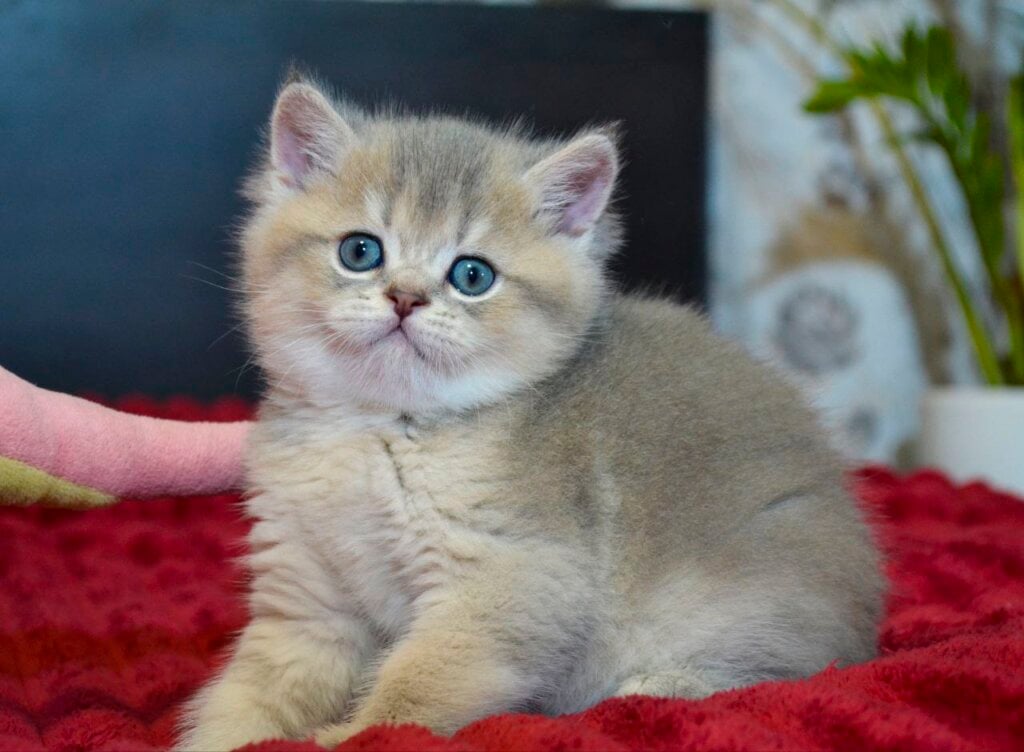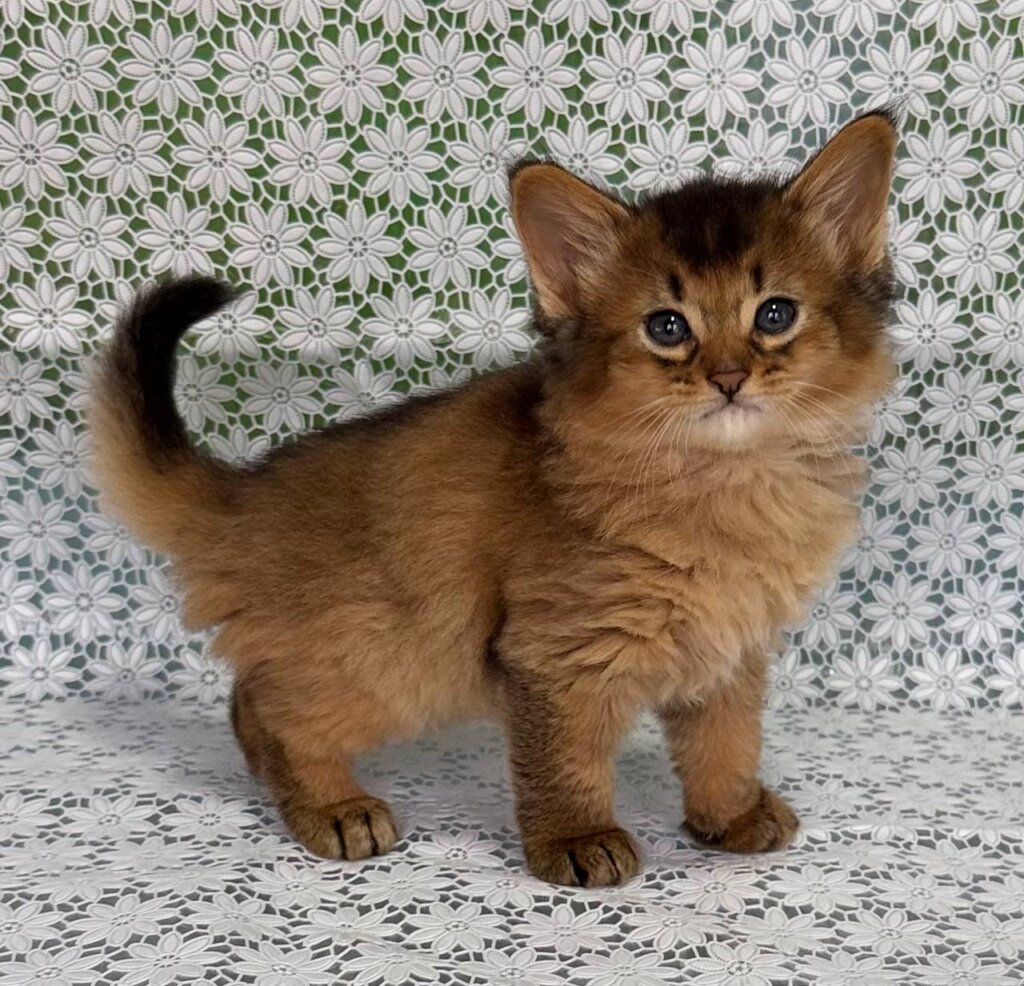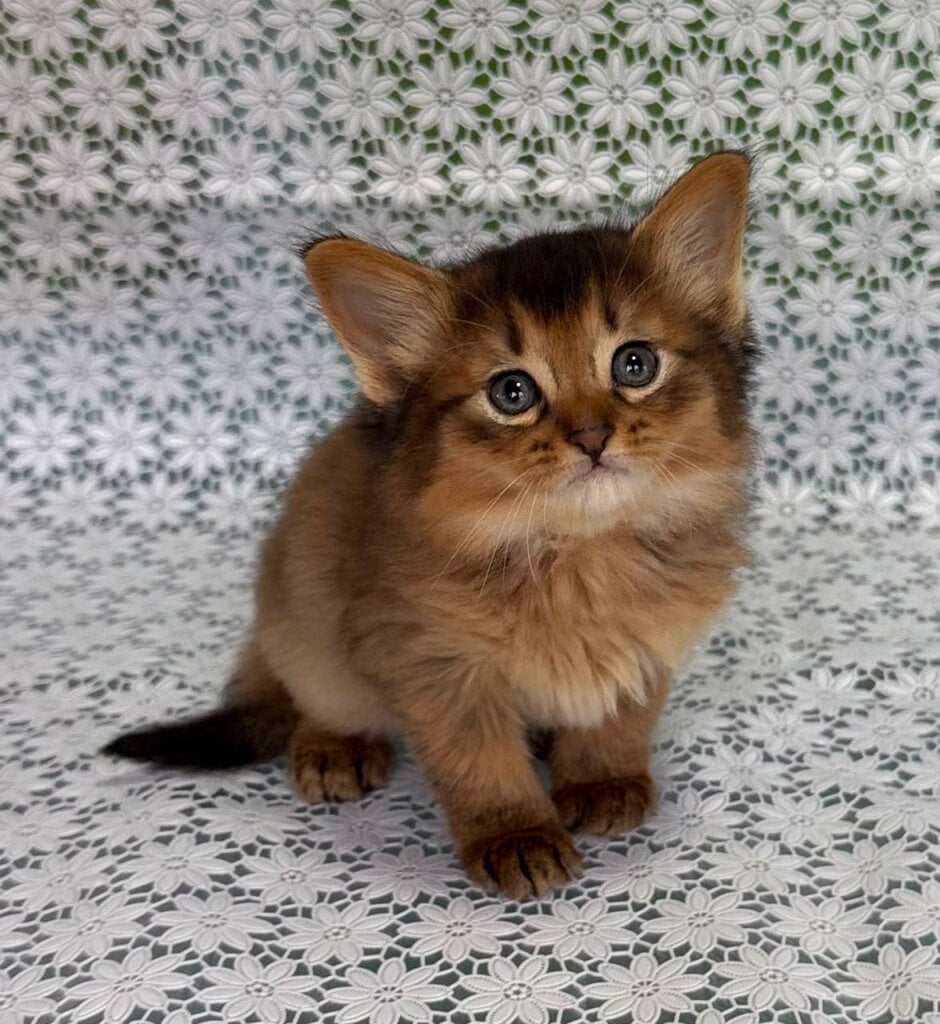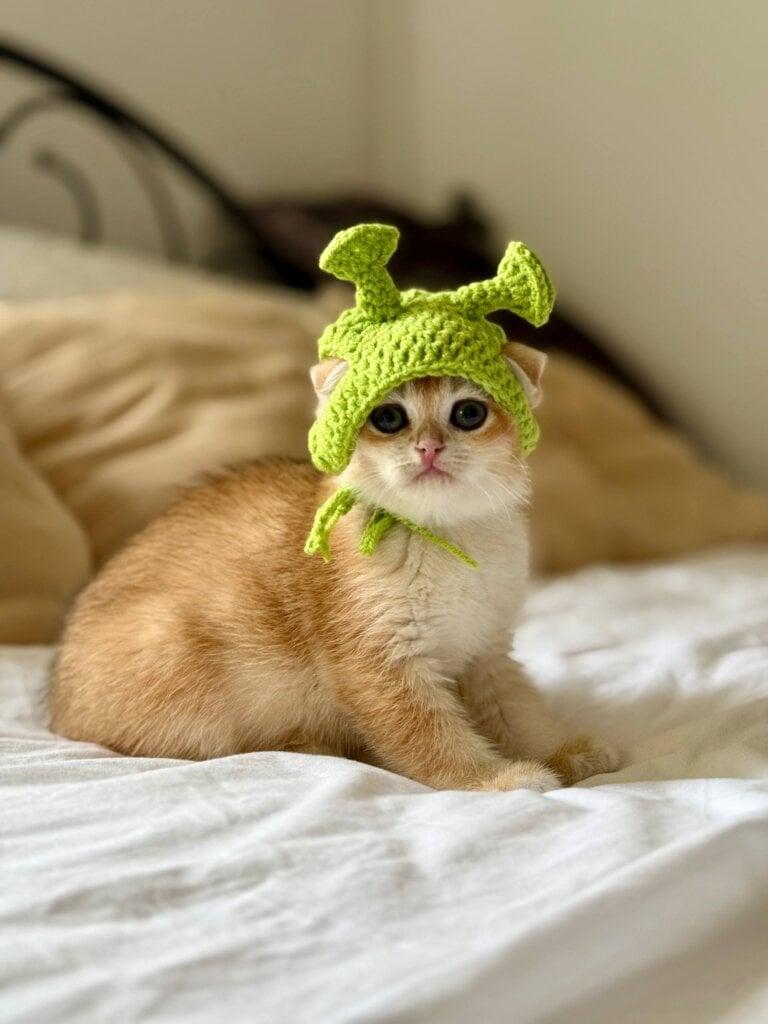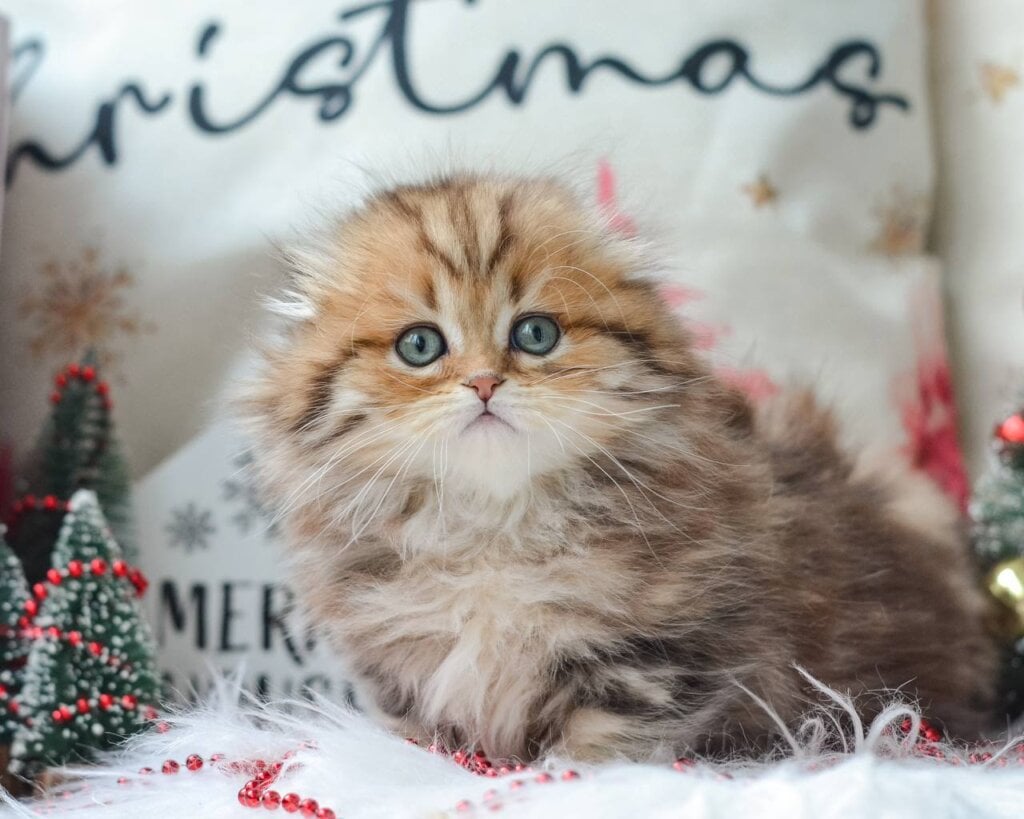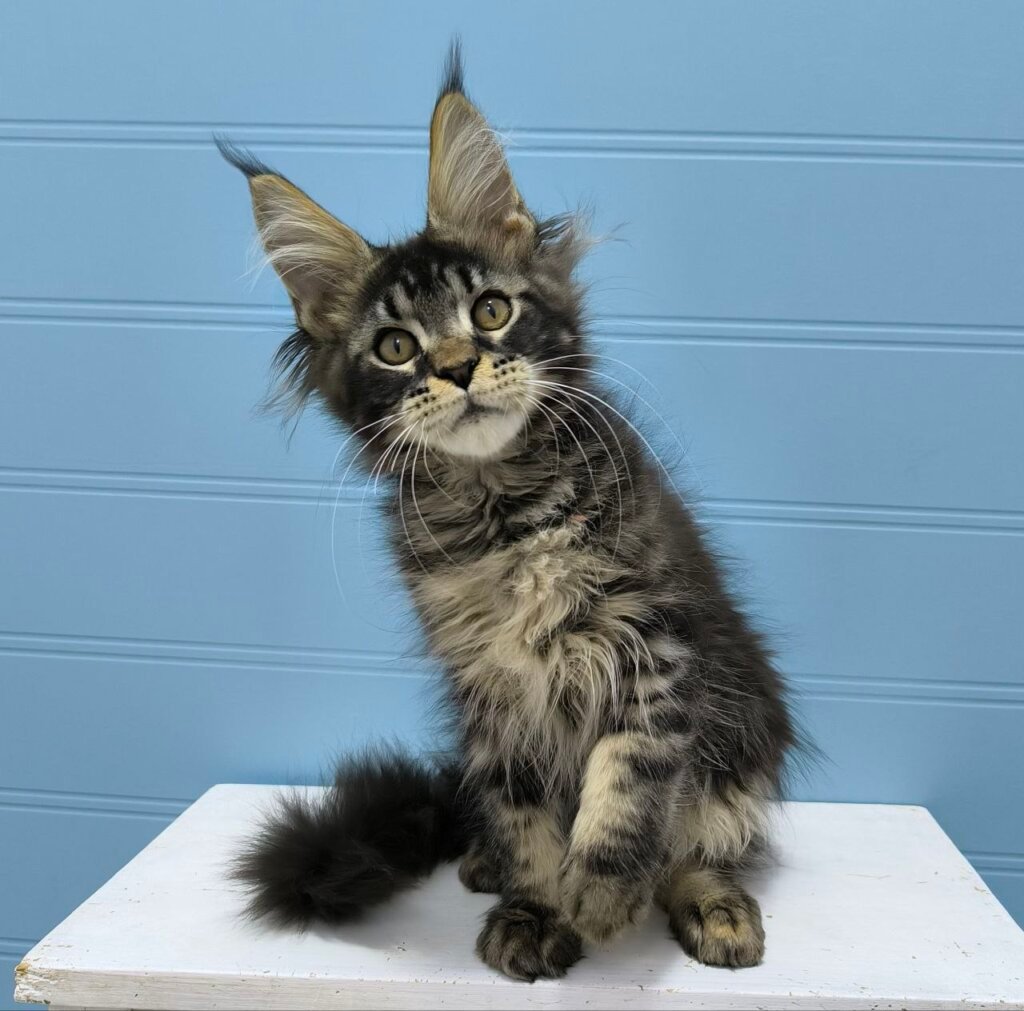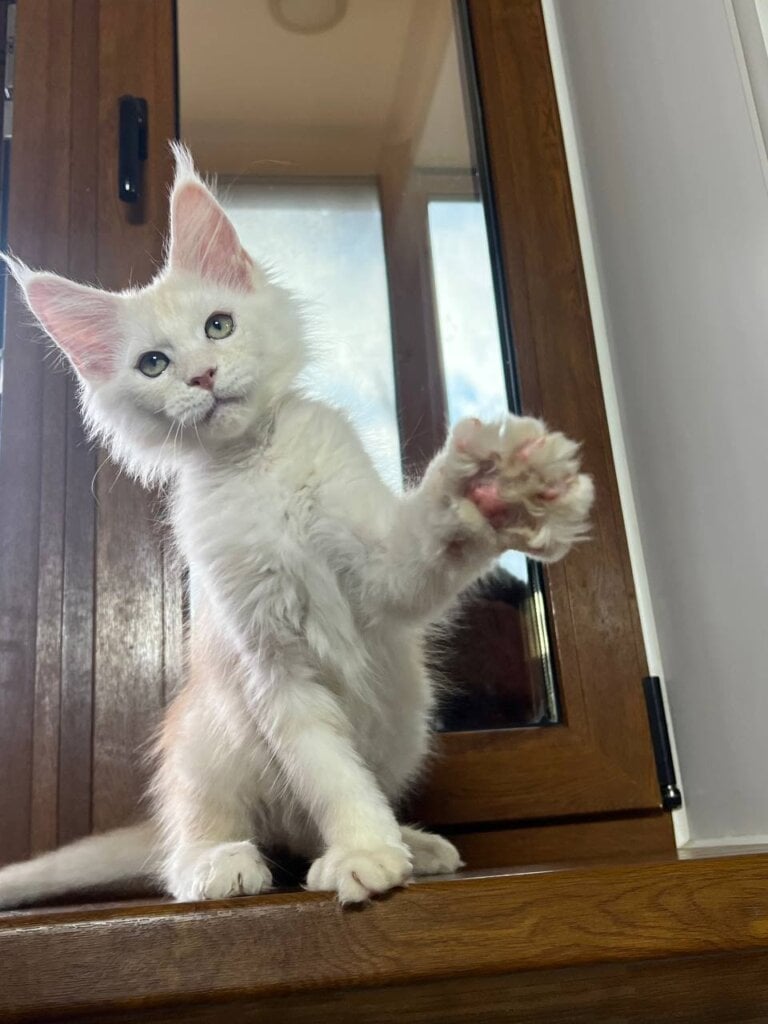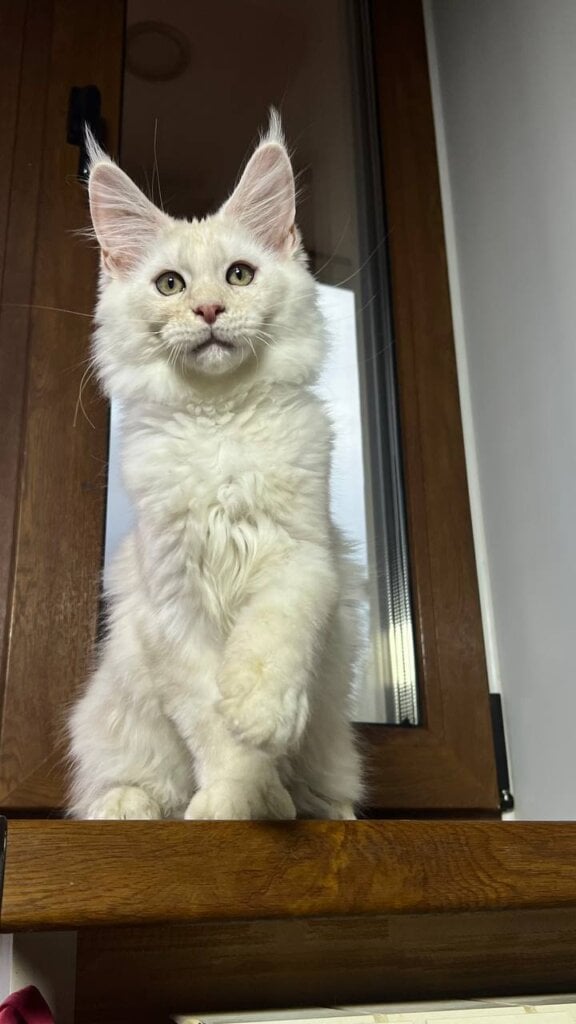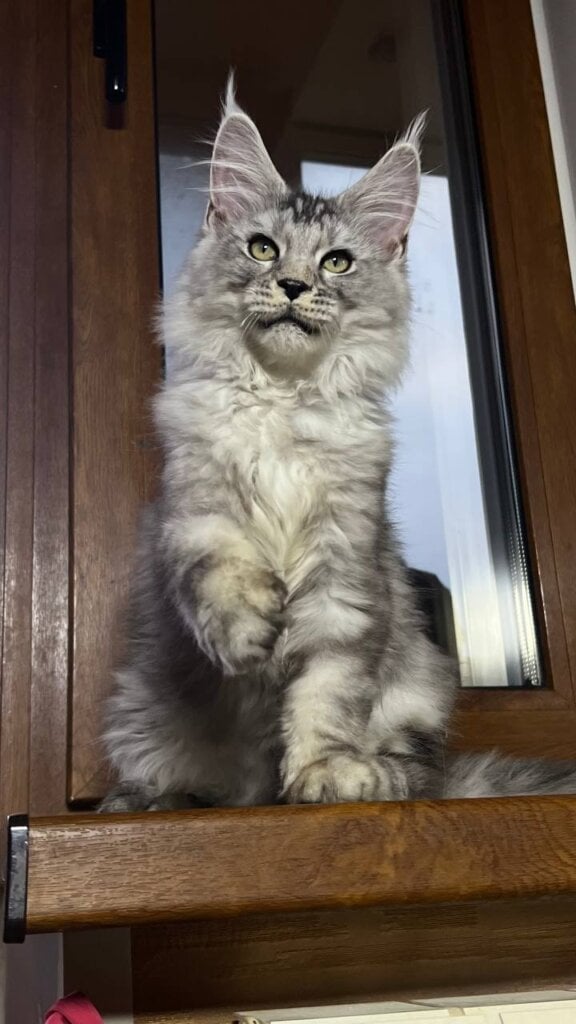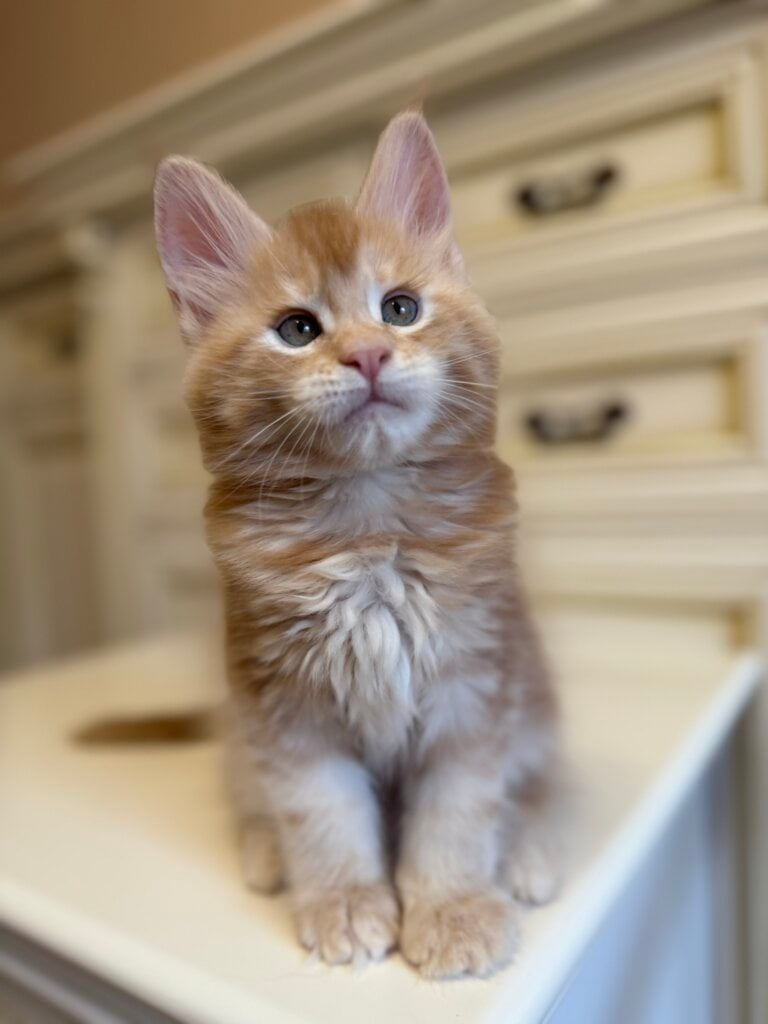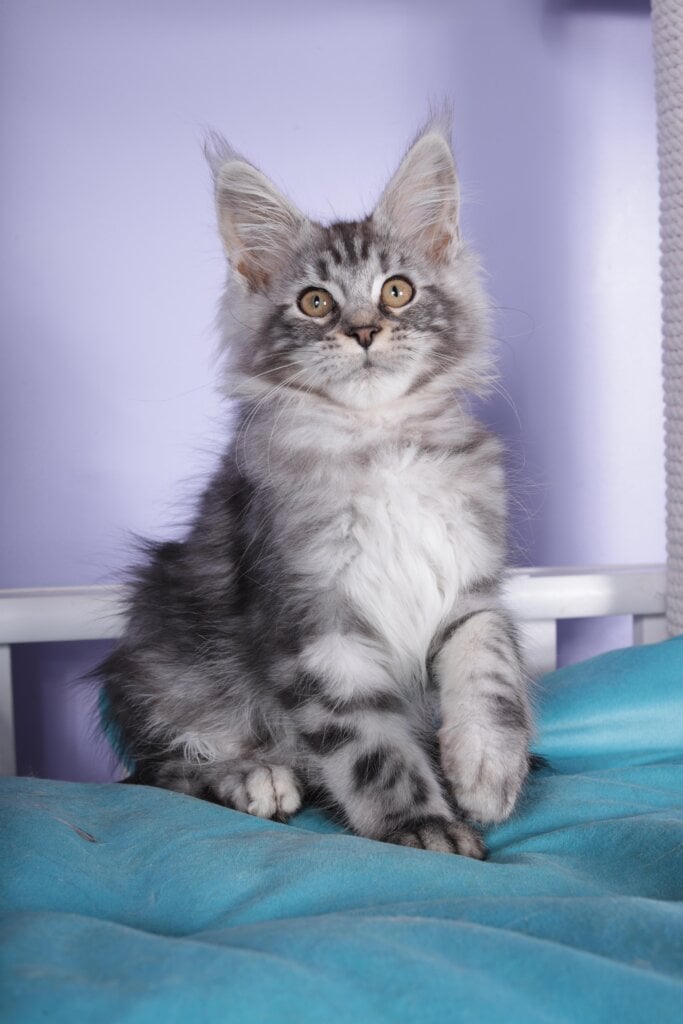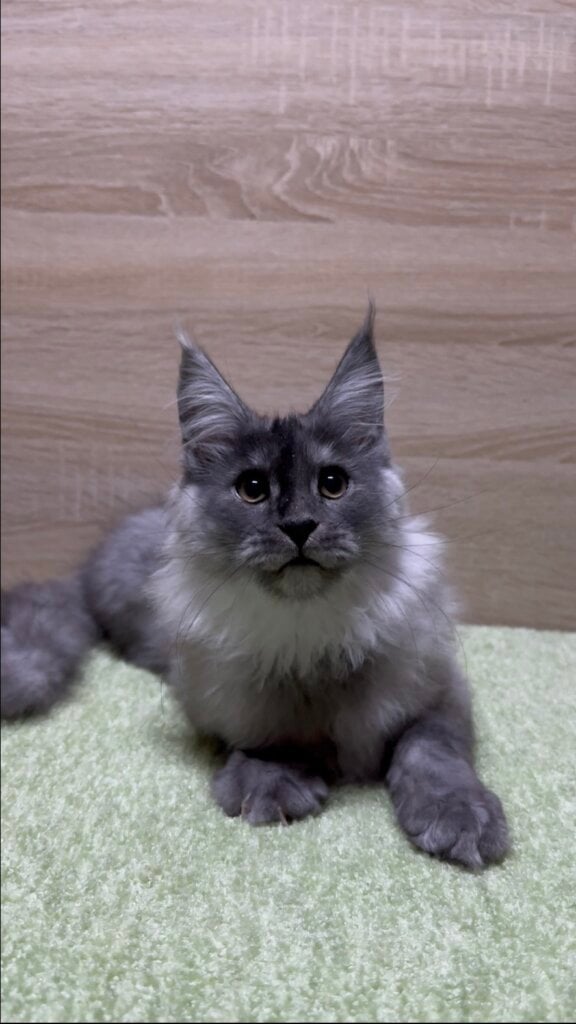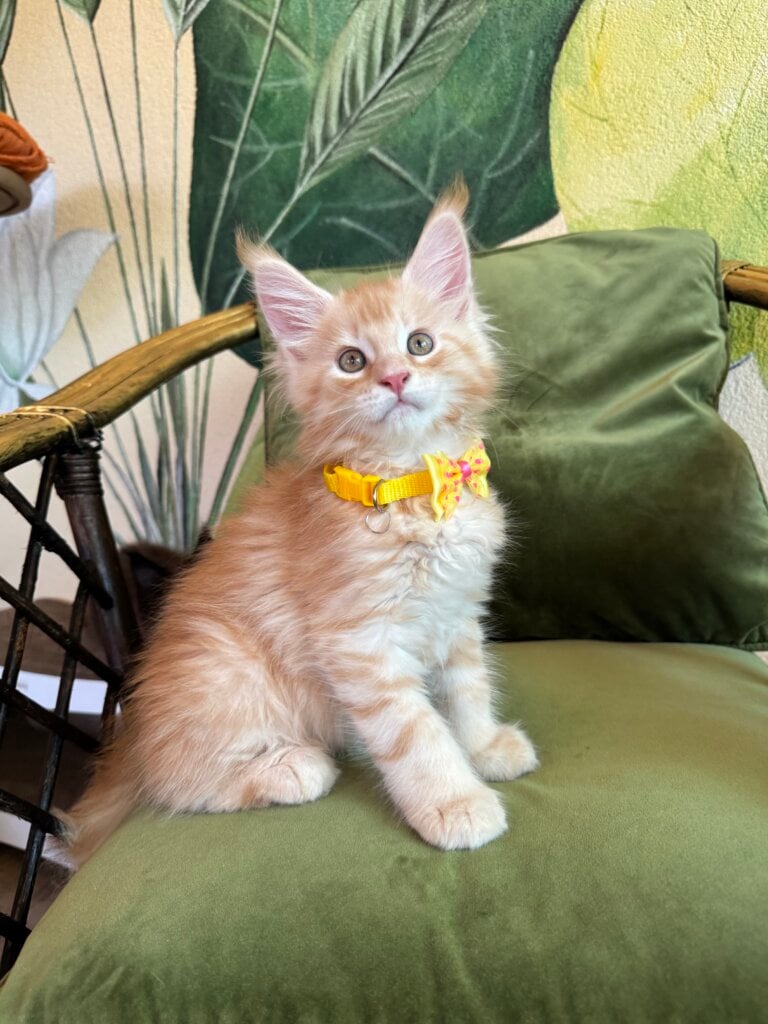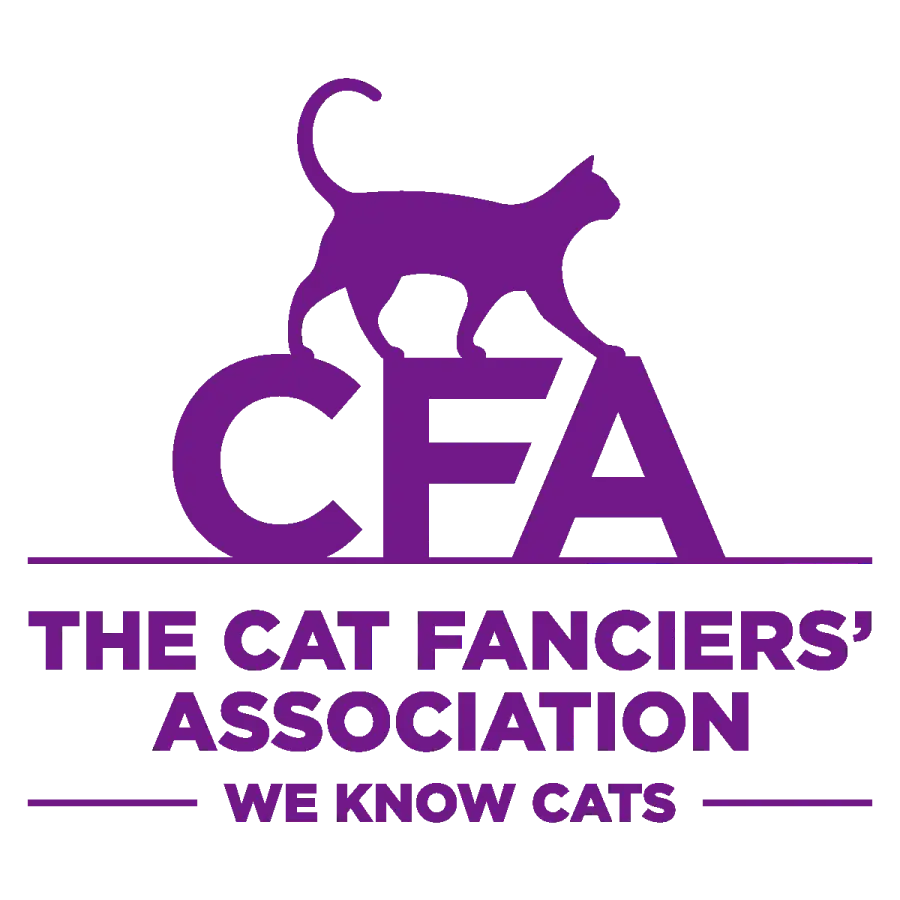Munchkin cat breed is a cat breed of small to medium-sized cats characterized by their short legs and playful temperament. Munchkins have a charming face, personable manner, and enjoy playing with people of all ages.
Munchkin cats can be any color and any coat type, which makes them quite distinguished from any litter. With their spunky personality and low-maintenance requirements, they’re an ideal fit for active families looking for an affectionate companion.
What Defines a Munchkin Cat?
What makes the Munchkin cat different are its short legs – around 3 cm shorter than a regular cat. This breed’s playful energy, social nature, and kitten spirit that endures throughout life. Munchkins have long and short-haired coats and can be found in any color and pattern. Their short legs come from a genetic mutation, but they’re still speedy and graceful movers.
1. The Genetic Blueprint
The Munchkin cat’s trademark stumpy legs are caused by an autosomal dominant gene that impacts cartilage development. This mutation alters the way the leg bones grow, giving Munchkins their low-to-the-ground appearance.
For families, it’s essential to understand that this gene can lead to health issues. Certain Munchkins can have lordosis, a curve in the lower spine, or struggle with joint pain and arthritis as they age.
Breeding Munchkins requires some thought. Two cats with the dominant gene should never be bred, as kittens with two copies of the gene won’t survive. Most Munchkins are heterozygous–they carry just one copy of this gene, so they display the short-legged characteristic but remain healthy.
Understanding these fundamentals assists prospective owners in making intelligent decisions.
2. Distinctive Stature
The breed falls into three height groups: Standard, Supershort, and Rug Hugger. Adult Munchkins range from 1.8 – 4 kgs, which makes them light and easy to carry or hold.
Their form has been likened to dwarf dog breeds like the dachshund, yet Munchkins maintain the svelte, athletic physique of a cat. These stubby legs provide them with an adorable waddle and spunky gait that countless households awww over.
3. Coat Variations
Munchkin cats may have short or long hair. Both varieties can be found in every color and pattern-tabby, calico, solid, and beyond. Variety is the spice of life for pet parents.
Short-haired Munchkins require minimal grooming, whereas long-haired felines necessitate consistent brushing to maintain their plush coats and prevent mats. The long-haired Munchkins are frequently selected by families that desire a cuddly, soft companion.
4. Surprising Agility
Munchkins run with a leap, similar to rabbits or ferrets. They enjoy play and activity, and they do best when provided with toys and space to roam.
Cat trees or shelves that are closer to the ground assist them ascend securely. They do jump, but just not as high as other cats.
5. Breed Recognition
TICA and the Southern Africa Cat Council consider the Munchkin to be a breed. TICA gave the Munchkin championship status in 2003.
While some cat lovers argue whether the Munchkin should be recognized, breed registries assist in establishing standards and safeguarding the cats’ well-being.
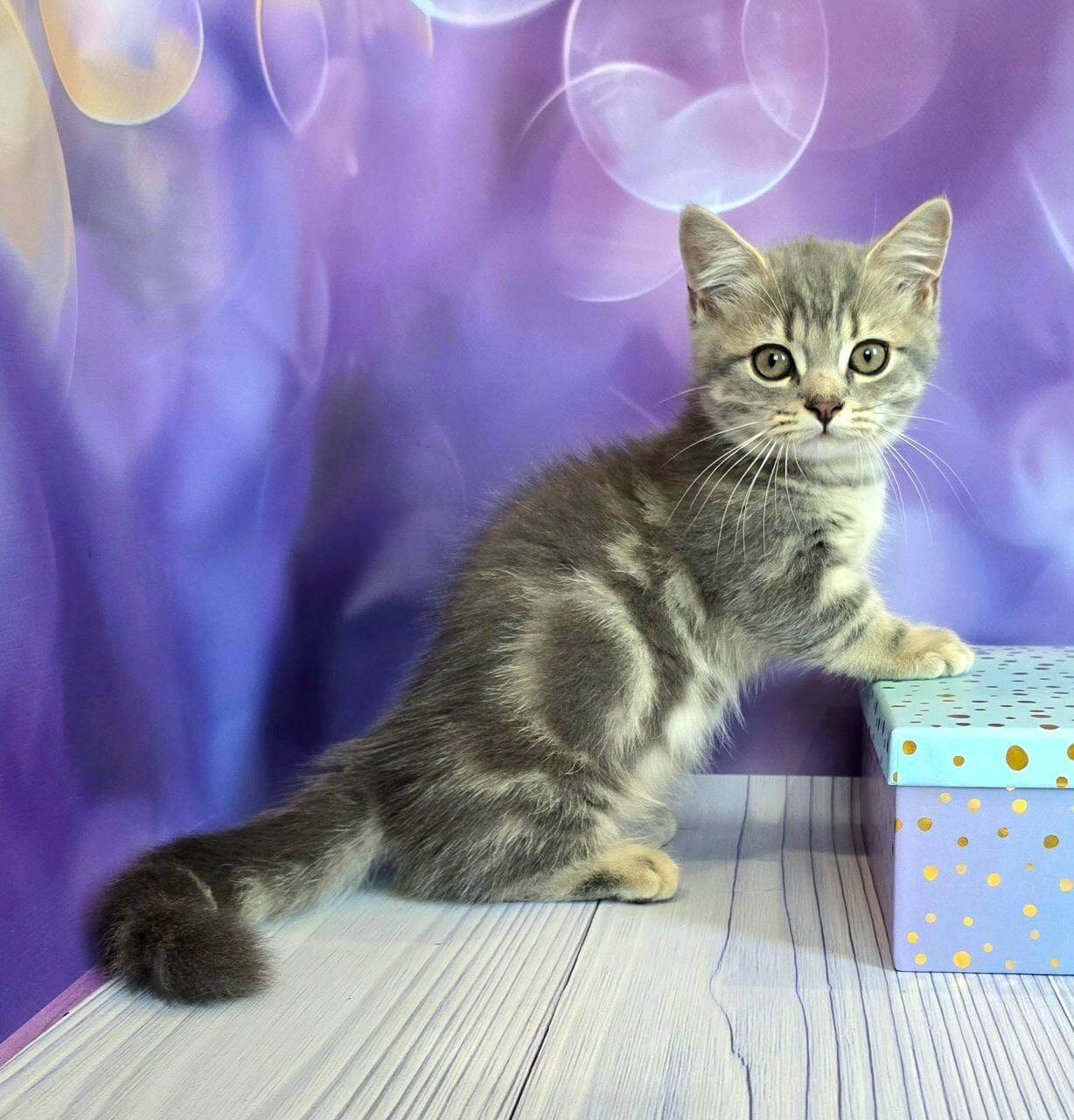
A Controversial Origin Story
The Munchkin’s controversial origin story begins in 1983 in Louisiana when a music teacher discovered a stray cat that he would name Blackberry. This short-legged feline transformed cat breeding worldwide. Blackberry’s kittens, some of them short-legged like her, turned heads among the local cat-lovers. That one litter would come to define the Munchkin breed.
Although Blackberry wasn’t the very first recorded short-legged cat, reports dating back to the 1940s in Britain documented four generations of these cats. Her rescue signifies the acknowledged inception of Munchkin cats as a breed.
Breeders caught something special in Blackberry’s kittens. They began to breed for the short-legged condition, which is the result of a genetic mutation called chondrodysplasia. This gene modifies the growth of the leg’s long bones, resulting in short legs but a full-sized body. Those original breeders wanted to preserve Blackberry’s kittens’ charm and spunk.
So they labored diligently, but their results ignited passionate discussion in the feline world. A large portion of the controversy surrounds whether it’s ethical to breed for a mutation. Advocates claim Munchkin cats are healthy, agile and transition well to domestic life.
They note that Munchkins can run, jump and play like other cats may not jump as high. Critics fret over health risks. They contend that chondrodysplasia may cause back or joint problems similar to those experienced by certain short-legged dog breeds. A few vets and cat associations still raise worries about potential pain or restricted movement in such cats.
The controversy didn’t deter breeders. In 1994, TICA accepted the breed. That was a giant leap, but it didn’t quash the debates. Certain organizations don’t even acknowledge the breed, based on animal welfare concerns.
Haters even began referring to them as “sausage cats” in the 1990s, adopting a syrupy moniker used by dachshunds, to accentuate their diminutive legs and win hearts and minds. Even now, the morality of breeding Munchkins is a controversial issue with cat enthusiasts, breeders and veterinarians across the globe.
The “Dachshund” Cat Personality
The Munchkin cat has a special magic beyond its stumpy legs and adorable appearance. We affectionately refer to them as “Sausage Cats” due to their short-legged ‘build,’ which many say reminds them of Dachshunds or Corgis. More than anything, what makes them amazing is how incredibly sweet, open, and loving they are with people.
They attach quickly to their families and adore being involved in daily life. If you’re looking for a feline companion who’s by your side, ready to participate in your antics or nap on your lap, the Munchkin is a solid choice.
Munchkins have a very high play drive. They remain kitten-y throughout adulthood, always up for a new chase or game of fetch. These cats adore chasing toys, such as small balls or feather teasers, and will frequently dream up their own fun with whatever they can scrounge up around the home.
Most families experience them dashing around the house, sliding on hardwood floors, or transporting tiny items in their mouth. They’re notorious for hoarding shiny trinkets, like jewelry or little metal things. It’s not uncommon for owners to discover a cache of fallen morsels beneath the couch or huddled in a corner.
This playful streak makes them a delight for homes with children or other energetic pets. They’re the ones who keep it interesting and provide a ton of laughs.
Though Munchkin cats are rambunctious, they are quite cuddly. They demand attention, bump their owners for head rubs and frequently snuggle when the day comes to a close. Some will pound on cozy blankets or nuzzle up to your ankles, a symbol of profound faith and endearment.
They want to be around you, not just for playtime but for comfort as well. Although they may appear timid when introduced to a stranger, they come around quickly once they detect sweetness and gentleness. That coupled with their friendly nature make them a good fit for households where visitors and new friends are regular visitors.
Munchkins thrive with other pets in the household. Their sociable and meek attitude makes them integrate with cats, dogs or even smaller animals. They make friends fast, and once they’ve done so, will nudge and play with their fur-siblings all day.
Their smarts are an additional benefit. They require brainteasers or treat-dispensing toys to stay engaged. A lot of owners resort to food puzzles, treat balls or hide and seek type games to keep them occupied.
With proper attention and affection, these lively felines can thrive for 12 to 15 years, imbuing their households with vitality and comfort.
Munchkin Cat Health Realities
Munchkin cats are known for their short legs, a characteristic associated with the genetic disorder achondroplasia. It provides them with a distinctive appearance, but it presents difficulties. Certain countries, notably the Netherlands and areas of Australia, prohibit their breeding due to health concerns. Responsible care, health checks, and informed breeding all go a long way toward supporting their well-being.
| Common Health Concerns | Description | Preventive Measures |
|---|---|---|
| Lordosis | Spinal curvature compressing internal organs | Early detection, regular vet visits |
| Osteoarthritis | Joint pain due to unique bone structure | Maintain healthy weight, gentle activity |
| Spinal deformities | Includes risks like pectus excavatum | Responsible breeding, health screening |
| Obesity | Extra weight strains joints and organs | Balanced diet, routine exercise |
| Genetic disease risk | 25% kittens may fail to gestate with standard Munchkin mating | Careful pairing, health testing |
Skeletal Concerns
Lordosis is one of the most famous skeletal problems in Munchkin cats. This moments spinal curvature can press on the chest and belly, making breathing and eating difficult for some. It’s not uncommon in the breed, and it can emerge in kittens as they mature.
Osteoarthritis is another major concern. Their stumpy little legs and elongated spines cause additional strain on joints which can result in pain or difficulty mobility as they age. Owners should observe for any limping or decreased mobility. Staying tuned into the subtle signs, like less jumping or more resting, helps catch problems early.
The professionals say proper breeding can reduce these risks. By only breeding healthy cats and screening for joint disease, it helps keep future litters healthier.
Spinal Issues
Munchkins can be prone to other spinal issues like pectus excavatum. This results in the chest wall being sunken, which can compress the lungs or heart and negatively impact the cat’s daily life.
For others, it could cause spinal issues that translate to reduced activity, difficulty breathing, or additional vet visits. They can be hard to detect early. Speedy vet screenings and x-rays can detect issues before they escalate.
Cat parents, chat with your vet about any changes in gait or posture. Routine exams prevent small issues from becoming large ones.
General Wellness
- Provide a well-balanced, age appropriate diet for bone and joint health.
- Provide daily play sessions to promote activity and maintain muscle tone.
- Use puzzle toys or interactive games for mental stimulation.
- Keep up with regular health checks and vaccines.
It keeps Munchkin cats from packing on those additional pounds. Even with their stumpy legs, they like to run and climb. Simply provide them secure ramps and stairs to keep getting around accessible.
Mental play counts, too. Toys, games, and even food puzzles keep these clever cats content. A schedule for annual check-ups and shots is essential, as some kittens may not grow as anticipated.
Staying Informed
Munchkin owners must educate themselves on breed risks and health requirements. Being proactive with care and working with a trusted vet gives these cats a better shot at a full, happy life.
Both breeders AND families should seek out expert advice. Stay updated on breed health headlines.
You can never be wrong to inquire about your pet’s health. Stay curious.
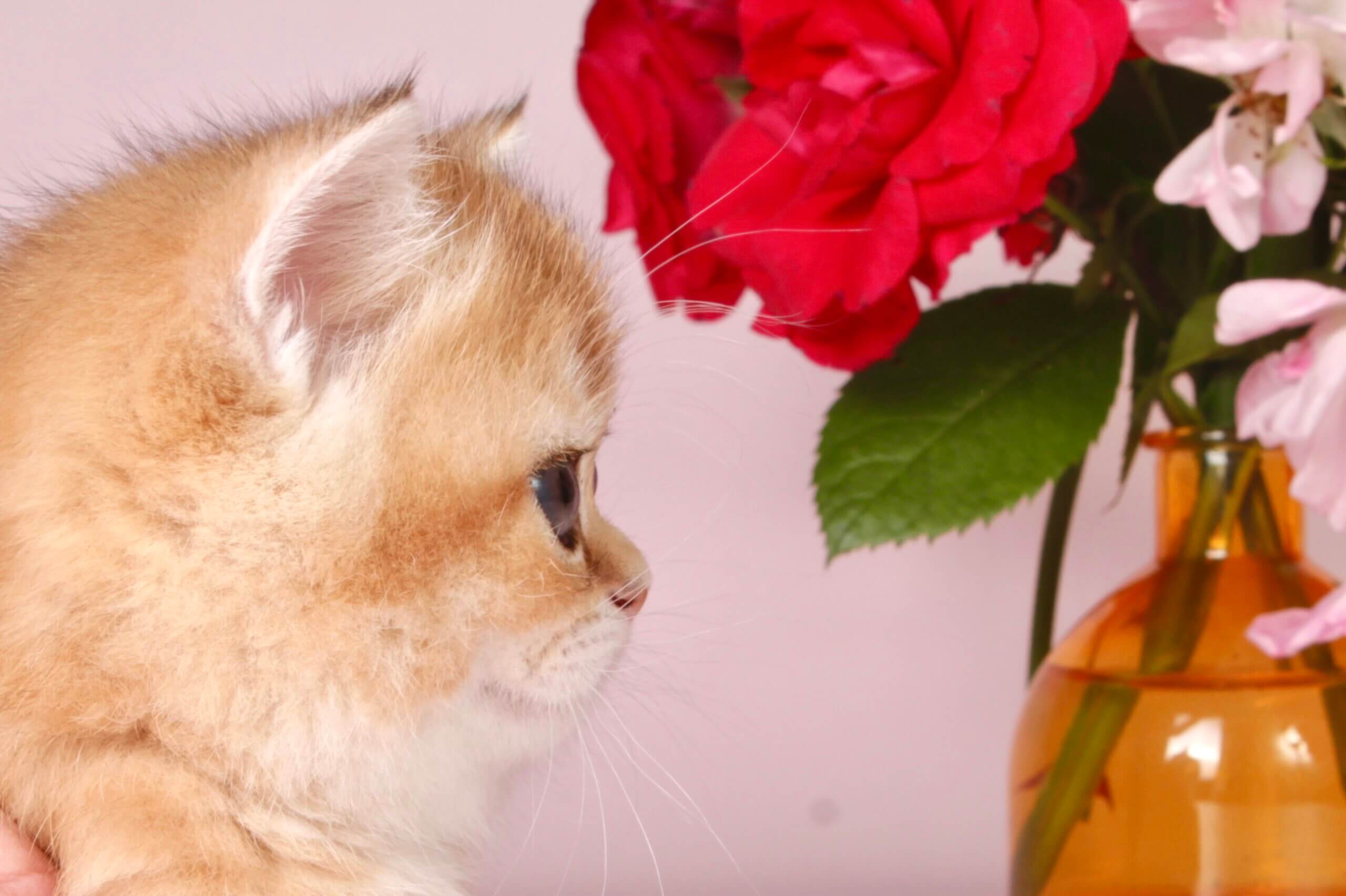
Caring for Their Unique Build
They’re known for their signature short legs and compact bodies. Their spunky spirit and inquisitive mind shine through, but their unique build demands additional care from pet parents. Designing a secure, stimulating environment is as much about considering their joints, mobility and comfort.
Furniture and toys appropriate for their size are more important than you would think. While these cats adore playtime and exploration, elevated jumps or hard landings can stress their joints. Low cat trees, soft beds and ramps in lieu of stairs simplify and secure their lives.
Baby-proof rooms and flat surfaces avoid tumbles. Munchkin cats tend to do best when they have a fellow pet, keeping them company and providing a pal for play.
Diet
- Opt for chock-full of protein like chicken, turkey or salmon dry and wet cat food.
- Provide kitten food for developing Munchkins, but transition to adult formulas at age one.
- Choose diets with glucosamine and chondroitin for their joints.
- Consider grain-free formulas if your cat has sensitivities.
Munchkin cats have petite builds, therefore it’s simple for them to become overweight. Never eyeball your meals – always portion check and feed on feeding guidelines. Don’t over-treat-little snacks are a long way with this breed.
Weigh your cat periodically and modify portion sizes accordingly. Obesity can cause joint strain which is hazardous for Munchkin cats. For more specialized needs like allergy or joint supplements, consult your vet.
Quality trumps brands. Seek out seal of approval labels that qualify for the standards. Your vet can assist you in selecting a reputable brand that suits your cat’s age, health, and lifestyle.
Grooming
Short-haired Munchkins require a fast coat brushing once or twice a week. Brush with a soft bristle brush to take out loose fur & keep their coat shiny.
Long-haired Munchkins require daily brushing. Their fur mats quick, so a metal comb or slicker brush helps avoid mats. Give extra attention to underarms and behind the ears.
Claw clipping is essential for Munchkin cats. Their stubby legs make scratching posts less than effective, so trim those claws every couple of weeks. Employ a cat-specific clipper for safety.
Some Munchkin cats can’t quite reach places when grooming. Assist with a damp cloth on difficult-to-reach places every week.
Exercise
- Interactive wand toys: Glide them along the floor for chasing fun.
- Puzzle feeders: Keep their mind sharp and reward gentle pawing.
- Low cat trees: Give Munchkin cats a spot to climb without big jumps.
- Soft tunnels: Encourage crawling and safe hide-and-seek.
- Toss lightweight balls: Great for short sprints and easy to catch.
Use ramps or stairs to help your cat access couches or beds. Say no to tall shelves or high perches that tempt hazardous leaps.
Interactive toys keep boredom away. Switch up the toys weekly. Laser pointers and treat puzzles can keep your cat active and engaged.
Play time is not just play. It fosters friendship and allows your cat connect with you. Have at least a couple of play sessions together every day, 10 minutes or more each time.
The Breeding Ethics Debate
Munchkins with their trademark short legs are caused by a dominant genetic mutation. This odd characteristic has been a source of much argument among dog lovers and professional minds alike. Others highlight how breeding Munchkin cats is no different than breeding short-legged dogs such as Corgis or Dachshunds-both of which have become adored pets across the globe.
In contrast, some believe that intentionally providing cats with short legs to begin with is unjust, particularly when it results in health complications and prevents their mobility as originally intended. A major worry is the possibility of health issues associated with this genetic alteration. Munchkin cats are more prone to things like lordosis, where the spine curves down and presses against vital organs like the heart, lungs, and trachea.
This can complicate the cat’s life and sometimes even reduce its lifespan. Some experts, including veterinarians, have highlighted that these cats may not be able to run or jump as well as others, impacting their overall quality of life. We’ve even seen judges or professionals quit shows or organizations as they were uncomfortable with breeding these cats ethically.
Responsible breeders have their part to play in this debate. Good breeders love their cats and do their damnedest not to pass on deleterious conditions. They conduct comprehensive health screenings, screen for genetic illnesses, and only breed cats who demonstrate no indication of major issues.
This helps ensure that kittens are as healthy as possible and aren’t just bred for aesthetics. Ethical breeders likewise adhere to global norms and are transparent regarding their breeding, fostering a relationship of trust with families seeking to adopt.
If you’re even considering introducing a Munchkin cat to your home, educating yourself on the kitten’s origins is essential. It’s not enough to fall for a sweet smile. You want to know that the breeder prioritizes the cats’ welfare, not just profit or fads.
Do your homework, request health paperwork, and make a cattery visit if possible. Search for breeders who are honest about the breed’s challenges and who seek to make the cats’ lives better – not just making them look good.
